Recent Advancements in Ventilation Systems Used to Decrease Energy Consumption in Buildings—Literature Review
Abstract
:1. Introduction
1.1. Ventilation System Requirements
- -
- the building envelope should be airtight to achieve energy efficiency in the building,
- -
- ventilation should be controlled: demand-controlled ventilation (DCV) systems should be used,
- -
- the selection of the ventilation airflow should be based on hygienic or technological reasons,
- -
- the heat from the exhaust air should be possible to be recovered,
- -
- Renewable energy sources (RES), such as, e.g., earth-to-air heat exchangers, heat-pumps, etc. are recommended to be used,
- -
- decentralized systems are recommended.
1.2. The Aim of the Paper
1.3. Literature Review—Materials and Methods
2. Airtightness of the Building’s Envelope as a Basic Requirement for Decreasing Energy Consumption
3. DCV as a Ventilation Control Strategy
- the use of indoor sensors for CO2, occupancy, humidity, etc.
- use of variable air volume (VAV) controllers for central systems,
- dividing a building into zones (zoning) with similar usage characteristics with separate ventilation units responsible for air quality in a given zone, such as in several rooms.
4. Decentralized Ventilation Systems
5. Preheating/Cooling of Outdoor Air in Earth-to-Air Heat Exchanger (EAHE)
6. Heat Recovery from Exhaust Air
7. Conclusions
- This literature review reinforces the belief that:
- airtightness of the building’s envelope is as a basic requirement for efficiency of buildings; in many countries, regulations need to be introduced or revised to suit the current global energy situation,
- lower demand for ventilation airflow and the associated lower amount of energy to drive fans are the main advantages of the ventilation control strategy known as DCV,
- decentralized systems, which do not require the use of long ducts, are an interesting alternative used to save energy, as it is known that the use of a central ventilation system requires more power consumption,
- due to the multitude of solutions and operating conditions, there is no simple answer to the question: which type of ground exchanger is better in terms of energy—multi-pipe or single-pipe? In order to answer this question, a detailed analysis of a given case should be carried out, taking into account the financial and/or energy aspect, or a SWOT analysis (strengths and weaknesses, opportunities and threats),
- the use of mechanical ventilation with heat recovery is actually a necessity regardless of the purpose of the building; such solutions are advantageous for enabling the maintenance of adequate indoor air quality, while improving the thermal performance of buildings.
Author Contributions
Funding
Data Availability Statement
Conflicts of Interest
Abbreviations
| CAV | constant air volume |
| CO2 | carbon dioxide |
| DCV | demand-controlled ventilation |
| EAHE | earth-to-air heat exchanger |
| HRV | heat-recovery ventilation |
| HVAC | heating, ventilation, and air conditioning |
| LHC | longitudinal heat conduction |
| MERV | minimum efficiency reporting value |
| n50 | airtightness coefficient |
| PCM | phase-changed materials |
| PM | particulate matter |
| PV | photovoltaic |
| RES | renewable energy sources |
| RH | relative humidity |
| SC | solar chimney |
| U | heat transfer coefficient |
| VAV | variable air volume |
| VOCs | volatile organic compounds |
References
- Amanowicz, Ł.; Szczechowiak, E. Zasady projektowania systemów wentylacji budynków energooszczędnych. Ciepłownictwo Ogrzew. Went. 2017, 48, 72–78. [Google Scholar] [CrossRef]
- Amanowicz, Ł.; Ratajczak, K. Praktyczne aspekty projektowania energooszczędnych systemów wentylacyjnych. Rynek Instal. 2021, 6, 46–52. [Google Scholar]
- Russell, M.; Sherman, M.; Rudd, A. Review of Residential Ventilation Technologies. HVACR Res. 2007, 13, 325–348. [Google Scholar] [CrossRef]
- Dudkiewicz, E.; Szczęśniak, S. Natural and Mechanical Ventilation of Industrial Halls. Nowocz. Hale 2017, 3, 66–71. [Google Scholar]
- Spodyniuk, N.; Voznyak, O.; Sukholova, I.; Dovbush, O.; Kasynets, M.; Datsko, O. Diagnosis of Damage to the Ventilation System. Diagnostyka 2021, 22, 91–99. [Google Scholar] [CrossRef]
- Cepiński, W.; Szałański, P. Air Filtration and Sterilization in Ventilation Systems According to the New Paradigm. J. Ecol. Eng. 2022, 23, 25–34. [Google Scholar] [CrossRef]
- Cepiński, W.; Szałański, P.; Misiński, J. Redukcja rozprzestrzeniania koronawirusa SARS-CoV-2 i choroby COVID-19 poprzez instalacje wentylacyjne i klimatyzacyjne. Instal 2020, 6, 28–36. [Google Scholar] [CrossRef]
- Szałański, P.; Cepiński, W.; Misiński, J. Przegląd zaleceń dla instalacji wentylacyjnych i klimatyzacyjnych w związku z zagrożeniem koronawirusem SARS-CoV-2 i chorobą COVID-19. Instal 2020, 5, 17–21. [Google Scholar]
- Szałański, P.; Cepiński, W. Prawdopodobieństwo przenoszenia wirusa SARS-CoV-2 drogą powietrzną w pomieszczeniach wentylowanych. Instal 2022, 2, 23–29. [Google Scholar] [CrossRef]
- Orman, Ł.J.; Majewski, G.; Radek, N.; Pietraszek, J. Analysis of Thermal Comfort in Intelligent and Traditional Buildings. Energies 2022, 15, 6522. [Google Scholar] [CrossRef]
- Kowalski, P.; Szałański, P.; Cepiński, W. Waste Heat Recovery by Air-to-Water Heat Pump from Exhausted Ventilating Air for Heating of Multi-Family Residential Buildings. Energies 2021, 14, 7985. [Google Scholar] [CrossRef]
- Kowalski, P.; Szałański, P. Airtightness Test of Single-Family Building and Calculation Result of the Energy Need for Heating in Polish Conditions. E3S Web Conf. 2018, 44, 00078. [Google Scholar] [CrossRef]
- Cholewa, T.; Siuta-Olcha, A.; Smolarz, A.; Muryjas, P.; Wolszczak, P.; Guz, Ł.; Bocian, M.; Balaras, C.A. An Easy and Widely Applicable Forecast Control for Heating Systems in Existing and New Buildings: First Field Experiences. J. Clean. Prod. 2022, 352, 131605. [Google Scholar] [CrossRef]
- Kordana-Obuch, S.; Starzec, M.; Słyś, D. Evaluation of the Influence of Catchment Parameters on the Required Size of a Stormwater Infiltration Facility. Water 2023, 15, 191. [Google Scholar] [CrossRef]
- Royuela-del-Val, A.; Padilla-Marcos, M.Á.; Meiss, A.; Casaseca-de-la-Higuera, P.; Feijó-Muñoz, J. Air Infiltration Monitoring Using Thermography and Neural Networks. Energy Build. 2019, 191, 187–199. [Google Scholar] [CrossRef]
- Bhandari, M.; Hun, D.; Shrestha, S.; Pallin, S.; Lapsa, M. A Simplified Methodology to Estimate Energy Savings in Commercial Buildings from Improvements in Airtightness. Energies 2018, 11, 3322. [Google Scholar] [CrossRef]
- Dudkiewicz, E.; Fidorów-Kaprawy, N. Analiza energetyczna wydajności stropu grzewczego na przykładzie budynku mieszkalnego w Niemczech, Polsce i Ukrainie. Mater. Bud. 2022, 9, 84–87. [Google Scholar] [CrossRef]
- Banister, C.; Bartko, M.; Berquist, J.; Macdonald, I.; Vuotari, M.; Wills, A. Energy and Emissions Effects of Airtightness for Six Non-Residential Buildings in Canada with Comparison to Contemporary Limits and Assumptions. J. Build. Eng. 2022, 58, 104977. [Google Scholar] [CrossRef]
- Liu, X.; Zhang, T.; Liu, X.; Li, L.; Lin, L.; Jiang, Y. Energy Saving Potential for Space Heating in Chinese Airport Terminals: The Impact of Air Infiltration. Energy 2021, 215, 119175. [Google Scholar] [CrossRef]
- Verbeke, S.; Audenaert, A. A Prospective Study on the Evolution of Airtightness in 41 Low Energy Dwellings. E3S Web Conf. 2020, 172, 05005. [Google Scholar] [CrossRef]
- Moujalled, B.; Leprince, V.; Berthault, S.; Litvak, A.; Hurel, N. Mid-Term and Long-Term Changes in Building Airtightness: A Field Study on Low-Energy Houses. Energy Build. 2021, 250, 111257. [Google Scholar] [CrossRef]
- Simson, R.; Rebane, T.; Kiil, M.; Thalfeldt, M.; Kurnitski, J. The Impact of Infiltration on Heating Systems Dimensioning in Estonian Climate. E3S Web Conf. 2020, 172, 05004. [Google Scholar] [CrossRef]
- Miszczuk, A.; Heim, D. Parametric Study of Air Infiltration in Residential Buildings—The Effect of Local Conditions on Energy Demand. Energies 2020, 14, 127. [Google Scholar] [CrossRef]
- Nitijevskis, A.; Keviss, V. Overview of Large Building Testing in Baltic Countries. E3S Web Conf. 2020, 172, 05007. [Google Scholar] [CrossRef]
- Poza-Casado, I.; Meiss, A.; Padilla-Marcos, M.Á.; Feijó-Muñoz, J. Airtightness and Energy Impact of Air Infiltration in Residential Buildings in Spain. Int. J. Vent. 2021, 20, 258–264. [Google Scholar] [CrossRef]
- Guillén-Lambea, S.; Rodríguez-Soria, B.; Marín, J.M. Air Infiltrations and Energy Demand for Residential Low Energy Buildings in Warm Climates. Renew. Sustain. Energy Rev. 2019, 116, 109469. [Google Scholar] [CrossRef]
- Domínguez-Amarillo, S.; Fernández-Agüera, J.; Campano, M.Á.; Acosta, I. Effect of Airtightness on Thermal Loads in Legacy Low-Income Housing. Energies 2019, 12, 1677. [Google Scholar] [CrossRef]
- Paukštys, V.; Cinelis, G.; Mockienė, J.; Daukšys, M. Airtightness and Heat Energy Loss of Mid-Size Terraced Houses Built of Different Construction Materials. Energies 2021, 14, 6367. [Google Scholar] [CrossRef]
- Heim, D.; Miszczuk, A. Modelling Building Infiltration Using the Airflow Network Model Approach Calibrated by Air-Tightness Test Results and Leak Detection. Build. Serv. Eng. Res. Technol. 2020, 41, 681–693. [Google Scholar] [CrossRef]
- Mélois, A.; Carrié, F.R.; El Mankibi, M.; Moujalled, B. Uncertainty in Building Fan Pressurization Tests: Review and Gaps in Research. J. Build. Eng. 2022, 52, 104455. [Google Scholar] [CrossRef]
- Zheng, X.; Cooper, E.; Gillott, M.; Wood, C. A Practical Review of Alternatives to the Steady Pressurisation Method for Determining Building Airtightness. Renew. Sustain. Energy Rev. 2020, 132, 110049. [Google Scholar] [CrossRef]
- Poza-Casado, I.; Rodríguez-del-Tío, P.; Fernández-Temprano, M.; Padilla-Marcos, M.-Á.; Meiss, A. An Envelope Airtightness Predictive Model for Residential Buildings in Spain. Build. Environ. 2022, 223, 109435. [Google Scholar] [CrossRef]
- Lu, X.; Pang, Z.; Fu, Y.; O’Neill, Z. Advances in Research and Applications of CO2-Based Demand-Controlled Ventilation in Commercial Buildings: A Critical Review of Control Strategies and Performance Evaluation. Build. Environ. 2022, 223, 109455. [Google Scholar] [CrossRef]
- Delwati, M.; Merema, B.; Breesch, H.; Helsen, L.; Sourbron, M. Impact of Demand Controlled Ventilation on System Performance and Energy Use. Energy Build. 2018, 174, 111–123. [Google Scholar] [CrossRef]
- Abdul Hamid, A.; Johansson, D.; Wahlström, Å.; Fransson, V. The Impact of a DCV-System on the IAQ, Energy Use, and Moisture Safety in Apartments—A Case Study. Int. J. Vent. 2022, 21, 35–52. [Google Scholar] [CrossRef]
- Abuimara, T.; Hobson, B.W.; Gunay, B.; O’Brien, W. Exploring the Adequacy of Mechanical Ventilation for Acceptable Indoor Air Quality in Office Buildings. Sci. Technol. Built Environ. 2022, 28, 275–288. [Google Scholar] [CrossRef]
- Alaidroos, A.; Almaimani, A.; Krarti, M.; Dahlan, A.; Maddah, R. Evaluation of the Performance of Demand Control Ventilation System for School Buildings Located in the Hot Climate of Saudi Arabia. Build. Simul. 2022, 15, 1067–1082. [Google Scholar] [CrossRef]
- Liu, P.; Justo Alonso, M.; Mathisen, H.M. Heat Recovery Ventilation Design Limitations Due to LHC for Different Ventilation Strategies in ZEB. Build. Environ. 2022, 224, 109542. [Google Scholar] [CrossRef]
- Bandurski, K. Różnica Między Obliczeniowym i Pomiarowym Wykorzystaniem Energii Do Ogrzewania w Budynkach Wielorodzinnych. Ciepłownictwo Ogrzew. Went. 2021, 1, 14–18. [Google Scholar] [CrossRef]
- Ratajczak, K. Rozbieżności Między Obliczeniowym i Zmierzonym Zużyciem Energii Do Ogrzewania i Przygotowania Ciepłej Wody Użytkowej Na Przykładzie Budynków Jednorodzinnych. Ciepłownictwo Ogrzew. Went. 2022, 1, 5–11. [Google Scholar] [CrossRef]
- Haddad, S.; Synnefa, A.; Ángel Padilla Marcos, M.; Paolini, R.; Delrue, S.; Prasad, D.; Santamouris, M. On the Potential of Demand-Controlled Ventilation System to Enhance Indoor Air Quality and Thermal Condition in Australian School Classrooms. Energy Build. 2021, 238, 110838. [Google Scholar] [CrossRef]
- Zhao, W.; Kilpeläinen, S.; Bask, W.; Lestinen, S.; Kosonen, R. Operational Challenges of Modern Demand-Control Ventilation Systems: A Field Study. Buildings 2022, 12, 378. [Google Scholar] [CrossRef]
- Mou, J.; Cui, S.; Khoo, D.W.Y. Computational Fluid Dynamics Modelling of Airflow and Carbon Dioxide Distribution inside a Seminar Room for Sensor Placement. Meas. Sens. 2022, 23, 100402. [Google Scholar] [CrossRef]
- Szczurek, A.; Azizah, A.; Maciejewska, M. The Detection of Activities Occurring Inside Quick Service Restaurants That Influence Air Quality. Sensors 2022, 22, 4056. [Google Scholar] [CrossRef]
- Justo Alonso, M.; Wolf, S.; Jørgensen, R.B.; Madsen, H.; Mathisen, H.M. A Methodology for the Selection of Pollutants for Ensuring Good Indoor Air Quality Using the De-Trended Cross-Correlation Function. Build. Environ. 2022, 209, 108668. [Google Scholar] [CrossRef]
- Borgen Haugland, M.; Yang, A.; Holøs, S.B.; Thunshelle, K.; Mysen, M. Demand-Controlled Ventilation: Do Different User Groups Require Different CO 2 -Setpoints? IOP Conf. Ser. Mater. Sci. Eng. 2019, 609, 042062. [Google Scholar] [CrossRef]
- Shin, H.; Kang, M.; Mun, S.-H.; Kwak, Y.; Huh, J.-H. A Study on Changes in Occupants’ Thermal Sensation Owing to CO2 Concentration Using PMV and TSV. Build. Environ. 2021, 187, 107413. [Google Scholar] [CrossRef]
- Kiamanesh, B.; Behravan, A.; Obermaisser, R. Realistic Simulation of Sensor/Actuator Faults for a Dependability Evaluation of Demand-Controlled Ventilation and Heating Systems. Energies 2022, 15, 2878. [Google Scholar] [CrossRef]
- Lu, X.; O’Neill, Z.; Li, Y.; Niu, F. A Novel Simulation-Based Framework for Sensor Error Impact Analysis in Smart Building Systems: A Case Study for a Demand-Controlled Ventilation System. Appl. Energy 2020, 263, 114638. [Google Scholar] [CrossRef]
- Taal, A.; Itard, L. Fault Detection and Diagnosis for Indoor Air Quality in DCV Systems: Application of 4S3F Method and Effects of DBN Probabilities. Build. Environ. 2020, 174, 106632. [Google Scholar] [CrossRef]
- Altendorf, D.; Grünewald, H.; Liu, T.-L.; Dehnert, J.; Trabitzsch, R.; Weiß, H. Decentralised Ventilation Efficiency for Indoor Radon Reduction Considering Different Environmental Parameters. Isot. Environ. Health Stud. 2022, 58, 195–213. [Google Scholar] [CrossRef]
- Dehnert, J.; Altendorf, D.; Trabitzsch, R.; Grünewald, H.; Geisenhainer, R.; Oeser, V.; Streil, T.; Weber, L.; Schönherr, B.; Thomas, J.; et al. Radon Protection in Apartments Using a Ventilation System Wireless-Controlled by Radon Activity Concentration. J. Radiol. Prot. 2021, 41, S109. [Google Scholar] [CrossRef]
- Ratajczak, K. Ventilation Strategy for Proper IAQ in Existing Nurseries Buildings—Lesson Learned from the Research during COVID-19 Pandemic. Aerosol Air Qual. Res. 2022, 22, 210337. [Google Scholar] [CrossRef]
- Ratajczak, K.; Basińska, M. The Well-Being of Children in Nurseries Does Not Have to Be Expensive: The Real Costs of Maintaining Low Carbon Dioxide Concentrations in Nurseries. Energies 2021, 14, 2035. [Google Scholar] [CrossRef]
- Ratajczak, K.; Szczechowiak, E. Energy Consumption Decreasing Strategy for Indoor Swimming Pools—Decentralized Ventilation System with a Heat Pump. Energy Build. 2020, 206, 109574. [Google Scholar] [CrossRef]
- Merzkirch, A.; Maas, S.; Scholzen, F.; Waldmann, D. Primary Energy Used in Centralised and Decentralised Ventilation Systems Measured in Field Tests in Residential Buildings. Int. J. Vent. 2019, 18, 19–27. [Google Scholar] [CrossRef]
- Bonato, P.; D’Antoni, M.; Fedrizzi, R. Modelling and Simulation-Based Analysis of a Façade-Integrated Decentralized Ventilation Unit. J. Build. Eng. 2020, 29, 101183. [Google Scholar] [CrossRef]
- Fu, N.; Kim, M.K.; Chen, B.; Sharples, S. Comparative Modelling Analysis of Air Pollutants, PM2.5 and Energy Efficiency Using Three Ventilation Strategies in a High-Rise Building: A Case Study in Suzhou, China. Sustainability 2021, 13, 8453. [Google Scholar] [CrossRef]
- Filis, V.; Kolarik, J.; Smith, K.M. The Impact of Wind Pressure and Stack Effect on the Performance of Room Ventilation Units with Heat Recovery. Energy Build. 2021, 234, 110689. [Google Scholar] [CrossRef]
- Carbonare, N.; Fugmann, H.; Asadov, N.; Pflug, T.; Schnabel, L.; Bongs, C. Simulation and Measurement of Energetic Performance in Decentralized Regenerative Ventilation Systems. Energies 2020, 13, 6010. [Google Scholar] [CrossRef]
- Zender-Świercz, E. Improvement of Indoor Air Quality by Way of Using Decentralised Ventilation. J. Build. Eng. 2020, 32, 101663. [Google Scholar] [CrossRef]
- Catalina, T.; Istrate, M.; Damian, A.; Vartires, A.; Dicu, T.; Cucoș, A. Indoor Air Quality Assessment in a Classroom Using a Heat Recovery Ventilation Unit. Rom. J. Phys. 2019, 64, 9–10. [Google Scholar]
- Ratajczak, K.; Amanowicz, Ł.; Szczechowiak, E. Assessment of the Air Streams Mixing in Wall-Type Heat Recovery Units for Ventilation of Existing and Refurbishing Buildings toward Low Energy Buildings. Energy Build. 2020, 227, 110427. [Google Scholar] [CrossRef]
- Carbonare, N.; Pflug, T.; Bongs, C.; Wagner, A. Design and Implementation of an Occupant-Centered Self-Learning Controller for Decentralized Residential Ventilation Systems. Build. Environ. 2021, 206, 108380. [Google Scholar] [CrossRef]
- Dudkiewicz, E.; Laska, M.; Fidorów-Kaprawy, N. Users’ Sensations in the Context of Energy Efficiency Maintenance in Public Utility Buildings. Energies 2021, 14, 8159. [Google Scholar] [CrossRef]
- Zender-Świercz, E.; Telejko, M.; Galiszewska, B.; Starzomska, M. Assessment of Thermal Comfort in Rooms Equipped with a Decentralised Façade Ventilation Unit. Energies 2022, 15, 7032. [Google Scholar] [CrossRef]
- Zender–Świercz, E. Assessment of Indoor Air Parameters in Building Equipped with Decentralised Façade Ventilation Device. Energies 2021, 14, 1176. [Google Scholar] [CrossRef]
- Pekdogan, T.; Tokuç, A.; Ezan, M.A.; Başaran, T. Experimental Investigation of a Decentralized Heat Recovery Ventilation System. J. Build. Eng. 2021, 35, 102009. [Google Scholar] [CrossRef]
- Zemitis, J.; Bogdanovics, R. Heat Recovery Efficiency of Local Decentralized Ventilation Device at Various Pressure Differences. Mag. Civ. Eng. 2020, 2, 120–128. [Google Scholar] [CrossRef]
- Pekdogan, T.; Tokuç, A.; Ezan, M.A.; Başaran, T. Experimental Investigation on Heat Transfer and Air Flow Behavior of Latent Heat Storage Unit in a Facade Integrated Ventilation System. J. Energy Storage 2021, 44, 103367. [Google Scholar] [CrossRef]
- Shahrzad, S.; Umberto, B. Parametric Optimization of Multifunctional Integrated Climate-Responsive Opaque and Ventilated Façades Using CFD Simulations. Appl. Therm. Eng. 2022, 204, 117923. [Google Scholar] [CrossRef]
- Amanowicz, Ł.; Wojtkowiak, J. Comparison of Single- and Multipipe Earth-to-Air Heat Exchangers in Terms of Energy Gains and Electricity Consumption: A Case Study for the Temperate Climate of Central Europe. Energies 2021, 14, 8217. [Google Scholar] [CrossRef]
- Kalús, D.; Gašparík, J.; Janík, P.; Kubica, M.; Šťastný, P. Innovative Building Technology Implemented into Facades with Active Thermal Protection. Sustainability 2021, 13, 4438. [Google Scholar] [CrossRef]
- Radlak, G.; Ulbrich, R. Application of Environmental Energy in Modern Solutions of Passive Buildings Based on ISOMAX System. Zesz. Nauk. Inż. Śr. Politech. Opol. 2005, 310, 141–149. [Google Scholar]
- Radlak, G.; Szmolke, N.; Ulbrich, R. The Experiences Concerning Energy Audits in Low Energy Consuming Buildings. Zesz. Nauk. Inż. Śr. Politech. Opol. 2006, 319, 205–214. [Google Scholar]
- Radlak, G. System pozyskiwania ciepła dla potrzeb ogrzewania i wentylacji obiektów. Zesz. Nauk. Mech. Politech. Opol. 2009, 94, 77–78. [Google Scholar]
- Kalús, D.; Koudelková, D.; Mučková, V.; Sokol, M.; Kurčová, M.; Janík, P. Practical Experience in the Application of Energy Roofs, Ground Heat Storages, and Active Thermal Protection on Experimental Buildings. Appl. Sci. 2022, 12, 9313. [Google Scholar] [CrossRef]
- Kalús, D.; Koudelková, D.; Mučková, V.; Sokol, M.; Kurčová, M. Contribution to the Research and Development of Innovative Building Components with Embedded Energy-Active Elements. Coatings 2022, 12, 1021. [Google Scholar] [CrossRef]
- Kalús, D.; Koudelková, D.; Mučková, V.; Sokol, M.; Kurčová, M. Experience in Researching and Designing an Innovative Way of Operating Combined Building–Energy Systems Using Renewable Energy Sources. Appl. Sci. 2022, 12, 10214. [Google Scholar] [CrossRef]
- Pacak, A.; Jedlikowski, A.; Karpuk, M.; Anisimov, S. Analysis of Power Demand Calculation for Freeze Prevention Methods of Counter-Flow Heat Exchangers Used in Energy Recovery from Exhaust Air. Int. J. Heat Mass Transf. 2019, 133, 842–860. [Google Scholar] [CrossRef]
- Radomski, B.; Kowalski, F.; Mróz, T. The Direct-Contact Gravel, Ground, Air Heat Exchanger—Application in Single-Family Residential Passive Buildings. Energies 2022, 15, 6110. [Google Scholar] [CrossRef]
- Przydróżny, E.; Przydróżna, A.; Szczęśniak, S. Możliwość wykorzystania odzysku ciepła z powietrza wywiewanego z suszarni zbóż. Instal 2018, 11, 26–30. [Google Scholar]
- Mihalakakou, G.; Souliotis, M.; Papadaki, M.; Halkos, G.; Paravantis, J.; Makridis, S.; Papaefthimiou, S. Applications of Earth-to-Air Heat Exchangers: A Holistic Review. Renew. Sustain. Energy Rev. 2022, 155, 111921. [Google Scholar] [CrossRef]
- Soares, N.; Rosa, N.; Monteiro, H.; Costa, J.J. Advances in Standalone and Hybrid Earth-Air Heat Exchanger (EAHE) Systems for Buildings: A Review. Energy Build. 2021, 253, 111532. [Google Scholar] [CrossRef]
- Ramalho, J.V.A.; Fernando, H.J.; Brum, R.S.; Domingues, A.M.B.; Navarro Pastor, N.R.; Burlón Olivera, M.R. Accessing the Thermal Performance of Earth–Air Heat Exchangers Surrounded by Galvanized Structures. Sustain. Energy Technol. Assess. 2022, 54, 102838. [Google Scholar] [CrossRef]
- Gao, X.; Xiao, Y.; Gao, P. Thermal Potential Improvement of an Earth-Air Heat Exchanger (EAHE) by Employing Backfilling for Deep Underground Emergency Ventilation. Energy 2022, 250, 123783. [Google Scholar] [CrossRef]
- Long, T.; Zhao, N.; Li, W.; Wei, S.; Li, Y.; Lu, J.; Huang, S.; Qiao, Z. Numerical Simulation of Diurnal and Annual Performance of Coupled Solar Chimney with Earth-to-Air Heat Exchanger System. Appl. Therm. Eng. 2022, 214, 118851. [Google Scholar] [CrossRef]
- Long, T.; Zhao, N.; Li, W.; Wei, S.; Li, Y.; Lu, J.; Huang, S.; Qiao, Z. Natural Ventilation Performance of Solar Chimney with and without Earth-Air Heat Exchanger during Transition Seasons. Energy 2022, 250, 123818. [Google Scholar] [CrossRef]
- Bai, Y.; Long, T.; Li, W.; Li, Y.; Liu, S.; Wang, Z.; Lu, J.; Huang, S. Experimental Investigation of Natural Ventilation Characteristics of a Solar Chimney Coupled with Earth-Air Heat Exchanger (SCEAHE) System in Summer and Winter. Renew. Energy 2022, 193, 1001–1018. [Google Scholar] [CrossRef]
- Long, T.; Li, Y.; Li, W.; Liu, S.; Lu, J.; Zheng, D.; Ye, K.; Qiao, Z.; Huang, S. Investigation on the Cooling Performance of a Buoyancy Driven Earth-Air Heat Exchanger System and the Impact on Indoor Thermal Environment. Appl. Therm. Eng. 2022, 207, 118148. [Google Scholar] [CrossRef]
- Li, Y.; Long, T.; Bai, X.; Wang, L.; Li, W.; Liu, S.; Lu, J.; Cheng, Y.; Ye, K.; Huang, S. An Experimental Investigation on the Passive Ventilation and Cooling Performance of an Integrated Solar Chimney and Earth–Air Heat Exchanger. Renew. Energy 2021, 175, 486–500. [Google Scholar] [CrossRef]
- Long, T.; Li, W.; Lv, Y.; Li, Y.; Liu, S.; Lu, J.; Huang, S.; Zhang, Y. Benefits of Integrating Phase-Change Material with Solar Chimney and Earth-to-Air Heat Exchanger System for Passive Ventilation and Cooling in Summer. J. Energy Storage 2022, 48, 104037. [Google Scholar] [CrossRef]
- Long, T.; Zheng, D.; Li, W.; Li, Y.; Lu, J.; Xie, L.; Huang, S. Numerical Investigation of the Working Mechanisms of Solar Chimney Coupled with Earth-to-Air Heat Exchanger (SCEAHE). Sol. Energy 2021, 230, 109–121. [Google Scholar] [CrossRef]
- Pouranian, F.; Akbari, H.; Hosseinalipour, S.M. Performance Assessment of Solar Chimney Coupled with Earth-to-Air Heat Exchanger: A Passive Alternative for an Indoor Swimming Pool Ventilation in Hot-Arid Climate. Appl. Energy 2021, 299, 117201. [Google Scholar] [CrossRef]
- Wei, H.; Yang, D.; Wang, J.; Du, J. Field Experiments on the Cooling Capability of Earth-to-Air Heat Exchangers in Hot and Humid Climate. Appl. Energy 2020, 276, 115493. [Google Scholar] [CrossRef]
- Sakhri, N.; Menni, Y.; Ameur, H. Experimental Investigation of the Performance of Earth-to-Air Heat Exchangers in Arid Environments. J. Arid Environ. 2020, 180, 104215. [Google Scholar] [CrossRef]
- Belloufi, Y.; Zerouali, S.; Rouag, A.; Aissaoui, F.; Atmani, R.; Brima, A.; Moummi, N. Transient Assessment of an Earth Air Heat Exchanger in Warm Climatic Conditions. Geothermics 2022, 104, 102442. [Google Scholar] [CrossRef]
- Ahmed, S.F.; Khan, M.M.K.; Amanullah, M.T.O.; Rasul, M.G.; Hassan, N.M.S. Thermal Performance of Building-Integrated Horizontal Earth-Air Heat Exchanger in a Subtropical Hot Humid Climate. Geothermics 2022, 99, 102313. [Google Scholar] [CrossRef]
- Skotnicka-Siepsiak, A. An Evaluation of the Performance of a Ground-to-Air Heat Exchanger in Different Ventilation Scenarios in a Single-Family Home in a Climate Characterized by Cold Winters and Hot Summers. Energies 2021, 15, 105. [Google Scholar] [CrossRef]
- Michalak, P. Hourly Simulation of an Earth-to-Air Heat Exchanger in a Low-Energy Residential Building. Energies 2022, 15, 1898. [Google Scholar] [CrossRef]
- Michalak, P. Impact of Air Density Variation on a Simulated Earth-to-Air Heat Exchanger’s Performance. Energies 2022, 15, 3215. [Google Scholar] [CrossRef]
- Amanowicz, Ł.; Wojtkowiak, J. Thermal Performance of Multi-Pipe Earth-to-Air Heat Exchangers Considering the Non-Uniform Distribution of Air between Parallel Pipes. Geothermics 2020, 88, 101896. [Google Scholar] [CrossRef]
- Amanowicz, Ł.; Wojtkowiak, J. Approximated Flow Characteristics of Multi-Pipe Earth-to-Air Heat Exchangers for Thermal Analysis under Variable Airflow Conditions. Renew. Energy 2020, 158, 585–597. [Google Scholar] [CrossRef]
- Amanowicz, Ł. Influence of Geometrical Parameters on the Flow Characteristics of Multi-Pipe Earth-to-Air Heat Exchangers—Experimental and CFD Investigations. Appl. Energy 2018, 226, 849–861. [Google Scholar] [CrossRef]
- Amanowicz, Ł.; Wojtkowiak, J. Validation of CFD Model for Simulation of Multi-Pipe Earth-to-Air Heat Exchangers (EAHEs) Flow Performance. Therm. Sci. Eng. Prog. 2018, 5, 44–49. [Google Scholar] [CrossRef]
- Qi, D.; Li, A.; Li, S.; Zhao, C. Comparative Analysis of Earth to Air Heat Exchanger Configurations Based on Uniformity and Thermal Performance. Appl. Therm. Eng. 2021, 183, 116152. [Google Scholar] [CrossRef]
- Qi, D.; Li, S.; Zhao, C.; Xie, W.; Li, A. Structural Optimization of Multi-Pipe Earth to Air Heat Exchanger in Greenhouse. Geothermics 2022, 98, 102288. [Google Scholar] [CrossRef]
- Michalak, P. Annual Energy Performance of an Air Handling Unit with a Cross-Flow Heat Exchanger. Energies 2021, 14, 1519. [Google Scholar] [CrossRef]
- Li, J.; Shao, S.; Wang, Z.; Xie, G.; Wang, Q.; Xu, Z.; Han, L.; Gou, X. A Review of Air-to-Air Membrane Energy Recovery Technology for Building Ventilation. Energy Build. 2022, 265, 112097. [Google Scholar] [CrossRef]
- Gurubalan, A.; Maiya, M.P.; Geoghegan, P.; Simonson, C.J. Performance Improvement of Membrane Energy Exchanger Using Ultrasound for Heating, Ventilation, and Air Conditioning Application. J. Therm. Sci. Eng. Appl. 2022, 14, 051015. [Google Scholar] [CrossRef]
- Liu, P.; Justo Alonso, M.; Mathisen, H.M.; Halfvardsson, A. Development and Optimization of Highly Efficient Heat Recoveries for Low Carbon Residential Buildings. Energy Build. 2022, 268, 112236. [Google Scholar] [CrossRef]
- Cho, H.-J.; Cheon, S.-Y.; Jeong, J.-W. Development of Empirical Models to Predict Latent Heat Exchange Performance for Hollow Fiber Membrane-Based Ventilation System. Appl. Therm. Eng. 2022, 213, 118686. [Google Scholar] [CrossRef]
- Tang, Y.; Ji, J.; Wang, C.; Xie, H.; Ke, W. Performance Prediction of a Novel Double-Glazing PV Curtain Wall System Combined with an Air Handling Unit Using Exhaust Cooling and Heat Recovery Technology. Energy Convers. Manag. 2022, 265, 115774. [Google Scholar] [CrossRef]
- Chen, Y.; Ozaki, A.; Lee, H. Energy Saving Potential of Passive Dehumidification System Combined with Energy Recovery Ventilation Using Renewable Energy. Energy Build. 2022, 268, 112170. [Google Scholar] [CrossRef]
- Guo, J.; Zhang, C. Utilization of Window System as Exhaust Air Heat Recovery Device and Its Energy Performance Evaluation: A Comparative Study. Energies 2022, 15, 3116. [Google Scholar] [CrossRef]
- Gainza-Barrencua, J.; Odriozola-Maritorena, M.; Barrutieta, X.; Gomez-Arriaran, I.; Hernández Minguillón, R. Use of Sunspaces to Obtain Energy Savings by Preheating the Intake Air of the Ventilation System: Analysis of Its Main Characteristics in the Different Spanish Climate Zones. J. Build. Eng. 2022, 62, 105331. [Google Scholar] [CrossRef]
- Barreto, G.; Qu, K.; Wang, Y.; Iten, M.; Riffat, S. An Innovative Window Heat Recovery (WHR) System with Heat Pipe Technology: Analytical, CFD, Experimental Analysis and Building Retrofit Performance. Energy Rep. 2022, 8, 3289–3305. [Google Scholar] [CrossRef]
- Bai, H.Y.; Liu, P.; Justo Alonso, M.; Mathisen, H.M. A Review of Heat Recovery Technologies and Their Frost Control for Residential Building Ventilation in Cold Climate Regions. Renew. Sustain. Energy Rev. 2022, 162, 112417. [Google Scholar] [CrossRef]
- Zender–Świercz, E. A Review of Heat Recovery in Ventilation. Energies 2021, 14, 1759. [Google Scholar] [CrossRef]
- Liu, S.; Ma, G.; Xu, S.; Jia, X.; Wu, G. Experimental Study of Ventilation System with Heat Recovery Integrated by Pump-Driven Loop Heat Pipe and Heat Pump. J. Build. Eng. 2022, 52, 104404. [Google Scholar] [CrossRef]
- Shuailing, L.; Guoyuan, M.; Xiaoya, J.; Shuxue, X.; Guoqiang, W. Performance of a Mechanically-Driven Loop Heat Pipe Heat Recovery System. Appl. Therm. Eng. 2022, 207, 118066. [Google Scholar] [CrossRef]
- Jia, X.; Ma, G.; Zhou, F.; Liu, S.; Wu, G.; Sui, Q. The Applicability and Energy Consumption of a Parallel-Loop Exhaust Air Heat Pump for Environment Control in Ultra-Low Energy Building. Appl. Therm. Eng. 2022, 210, 118292. [Google Scholar] [CrossRef]
- Díaz de Garayo, S.; Martínez, A.; Astrain, D. Annual Energy Performance of a Thermoelectric Heat Pump Combined with a Heat Recovery Unit to HVAC One Passive House Dwelling. Appl. Therm. Eng. 2022, 204, 117832. [Google Scholar] [CrossRef]
- Diaz de Garayo, S.; Martínez, A.; Astrain, D. Optimal Combination of an Air-to-Air Thermoelectric Heat Pump with a Heat Recovery System to HVAC a Passive House Dwelling. Appl. Energy 2022, 309, 118443. [Google Scholar] [CrossRef]
- Xu, Q.; Zhang, S.; Riffat, S. Ecopump: A Novel Thermoelectric Heat Pump/Heat Recovery Ventilator System for Domestic Building Applications. Int. J. Low-Carbon Technol. 2022, 17, 611–621. [Google Scholar] [CrossRef]
- Cepiński, W.; Kowalski, P.; Szałański, P. Waste Heat Recovery by Electric Heat Pump from Exhausted Ventilating Air for Domestic Hot Water in Multi-Family Residential Buildings. Rocz. Ochr. Śr. 2020, 22, 940–958. [Google Scholar]
- Shahsavar Goldanlou, A.; Kalbasi, R.; Afrand, M. Energy Usage Reduction in an Air Handling Unit by Incorporating Two Heat Recovery Units. J. Build. Eng. 2020, 32, 101545. [Google Scholar] [CrossRef]
- Abdul Hamid, A.; Johansson, D.; Lempart, M. Determining the Impact of Air-Side Cleaning for Heat Exchangers in Ventilation Systems. Build. Serv. Eng. Res. Technol. 2020, 41, 46–59. [Google Scholar] [CrossRef]
- Abadi, I.R.; Aminian, B.; Nasr, M.R.; Huizing, R.; Green, S.; Rogak, S. Experimental Investigation of Condensation in Energy Recovery Ventilators. Energy Build. 2022, 256, 111732. [Google Scholar] [CrossRef]
- Kordana-Obuch, S.; Starzec, M.; Wojtoń, M.; Słyś, D. Greywater as a Future Sustainable Energy and Water Source: Bibliometric Mapping of Current Knowledge and Strategies. Energies 2023, 16, 934. [Google Scholar] [CrossRef]
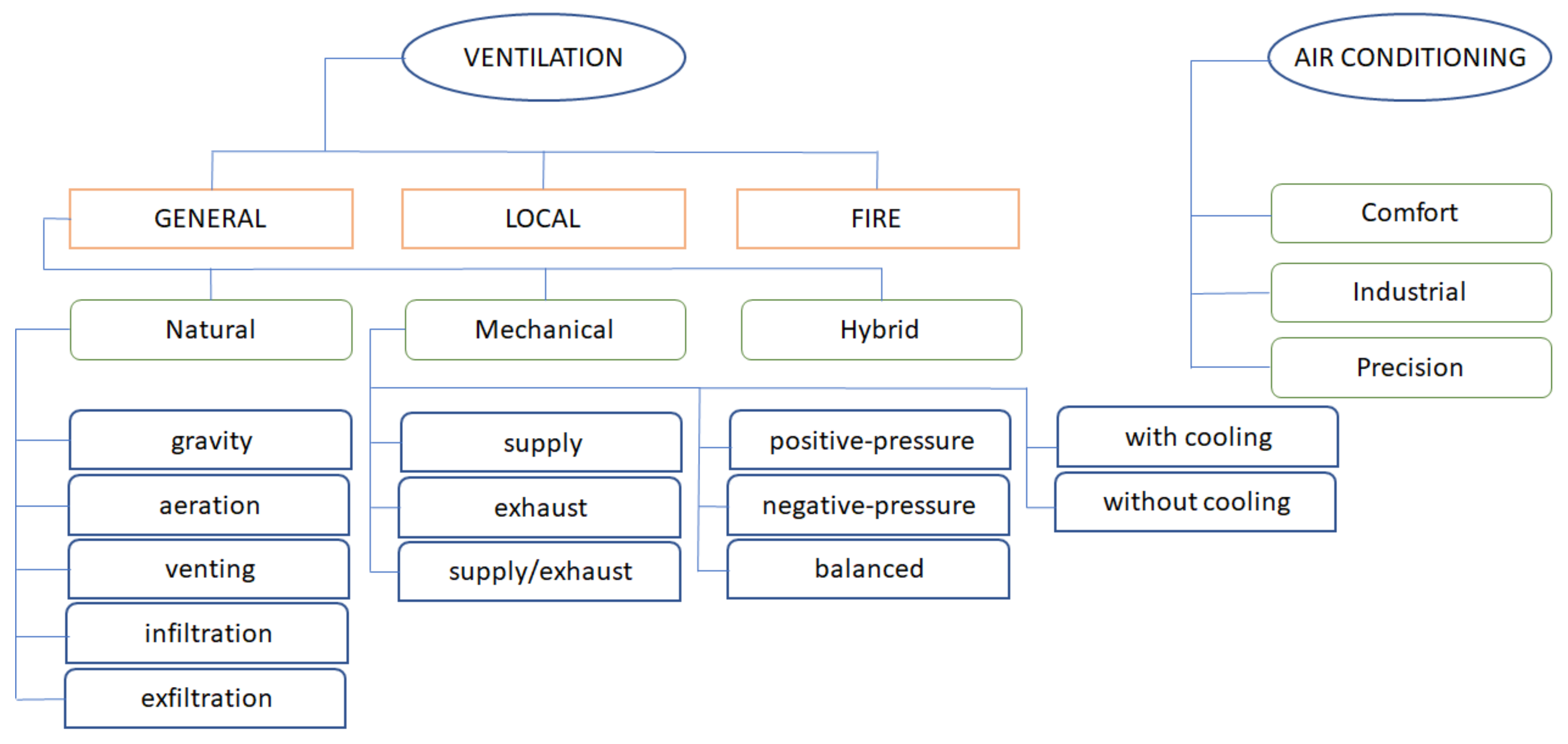
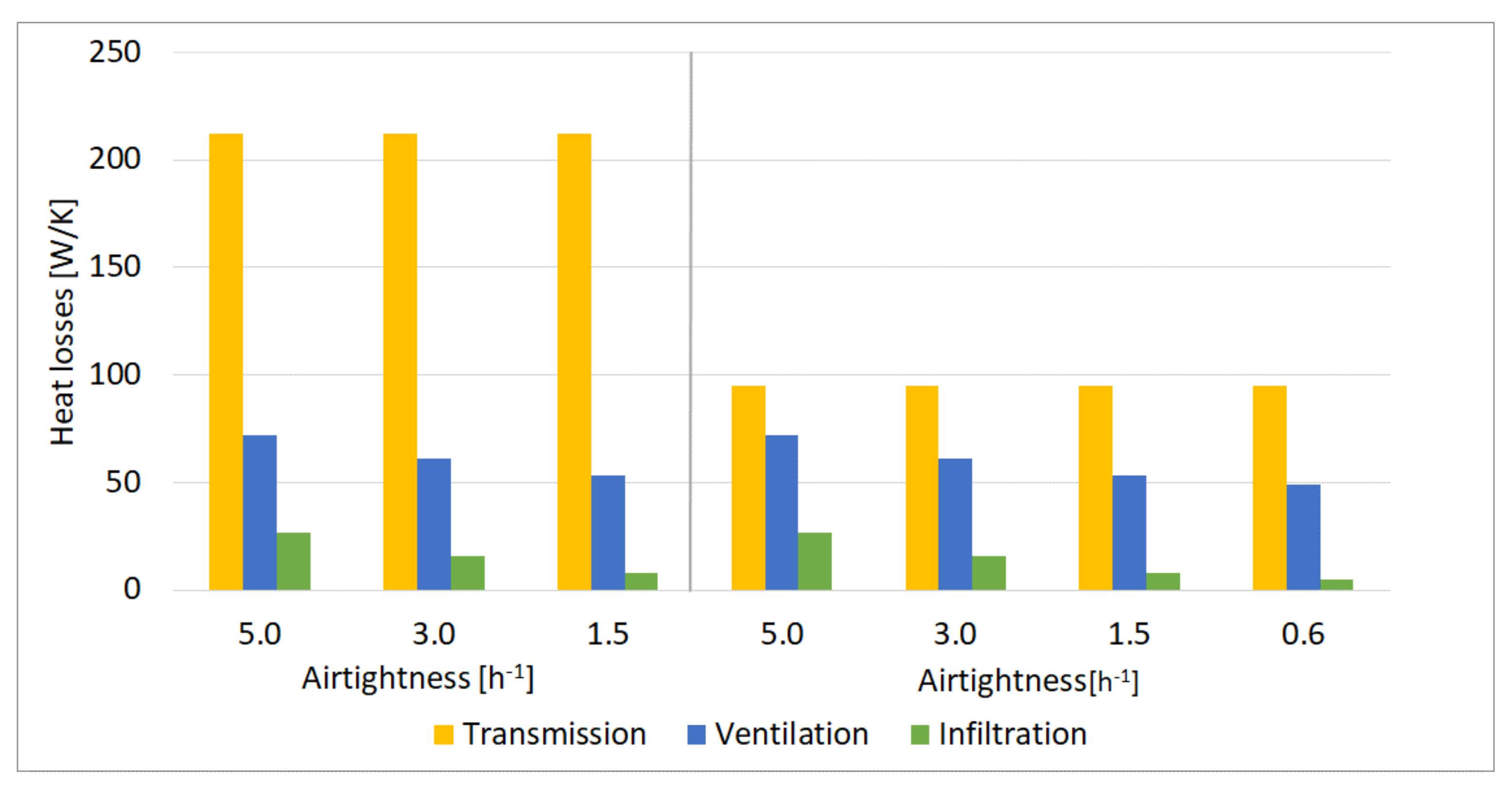
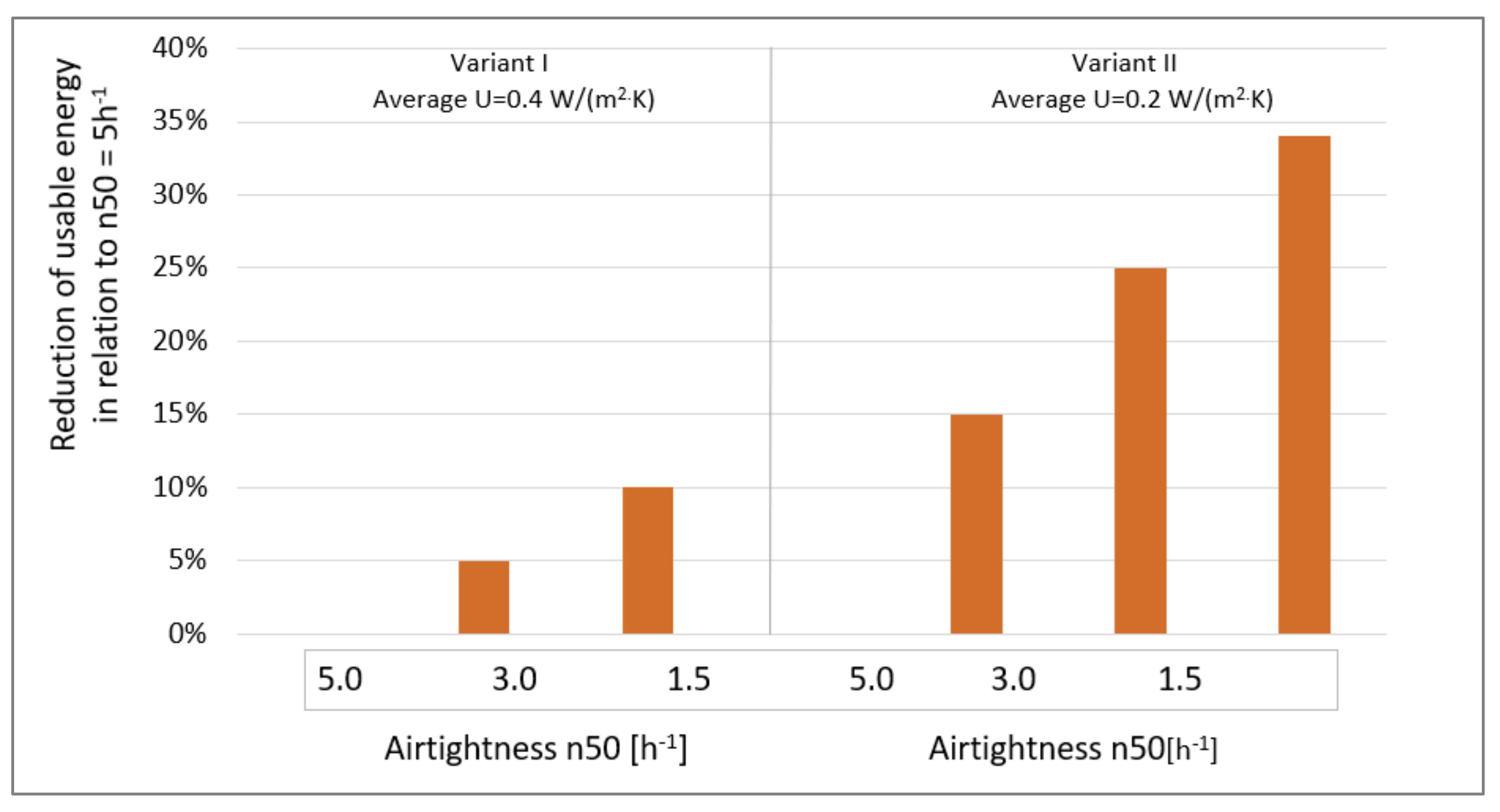
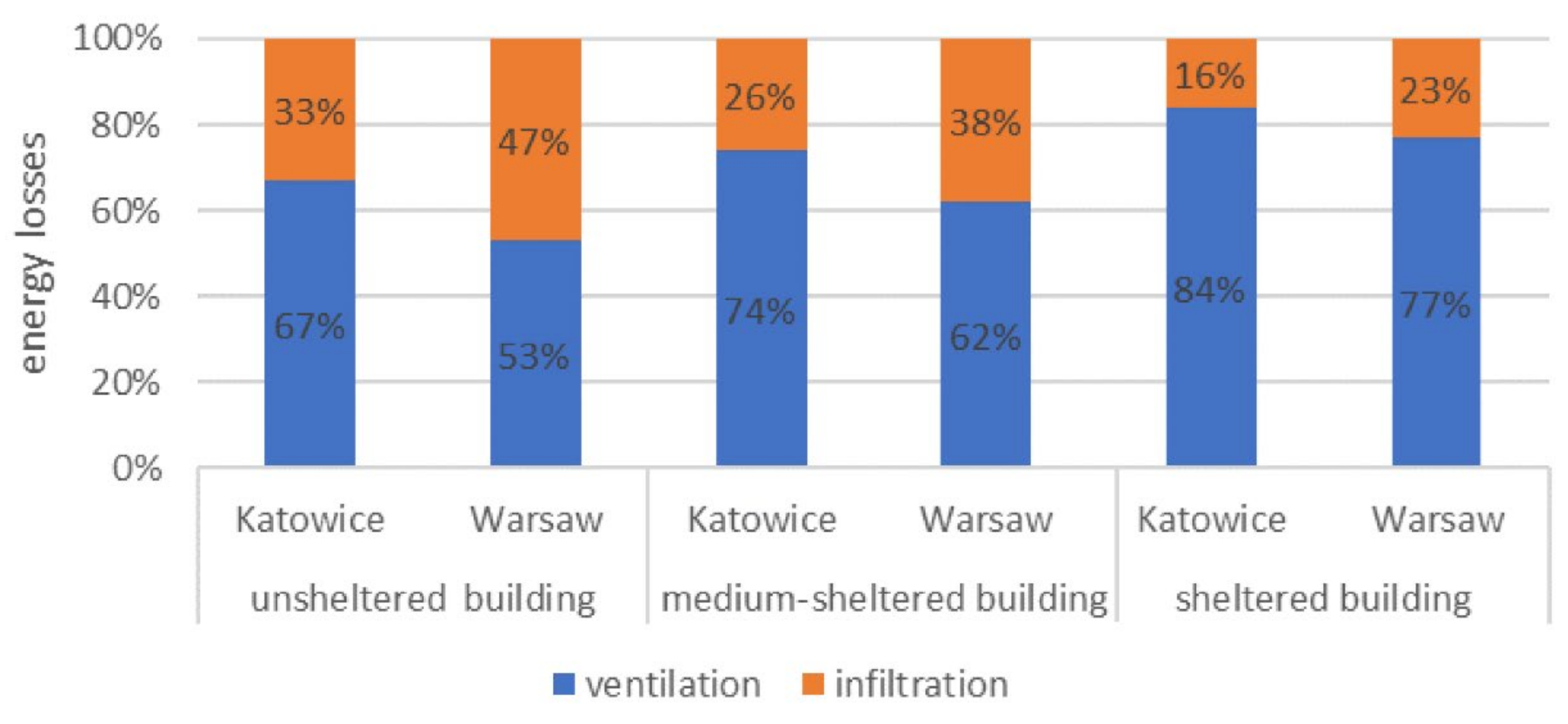
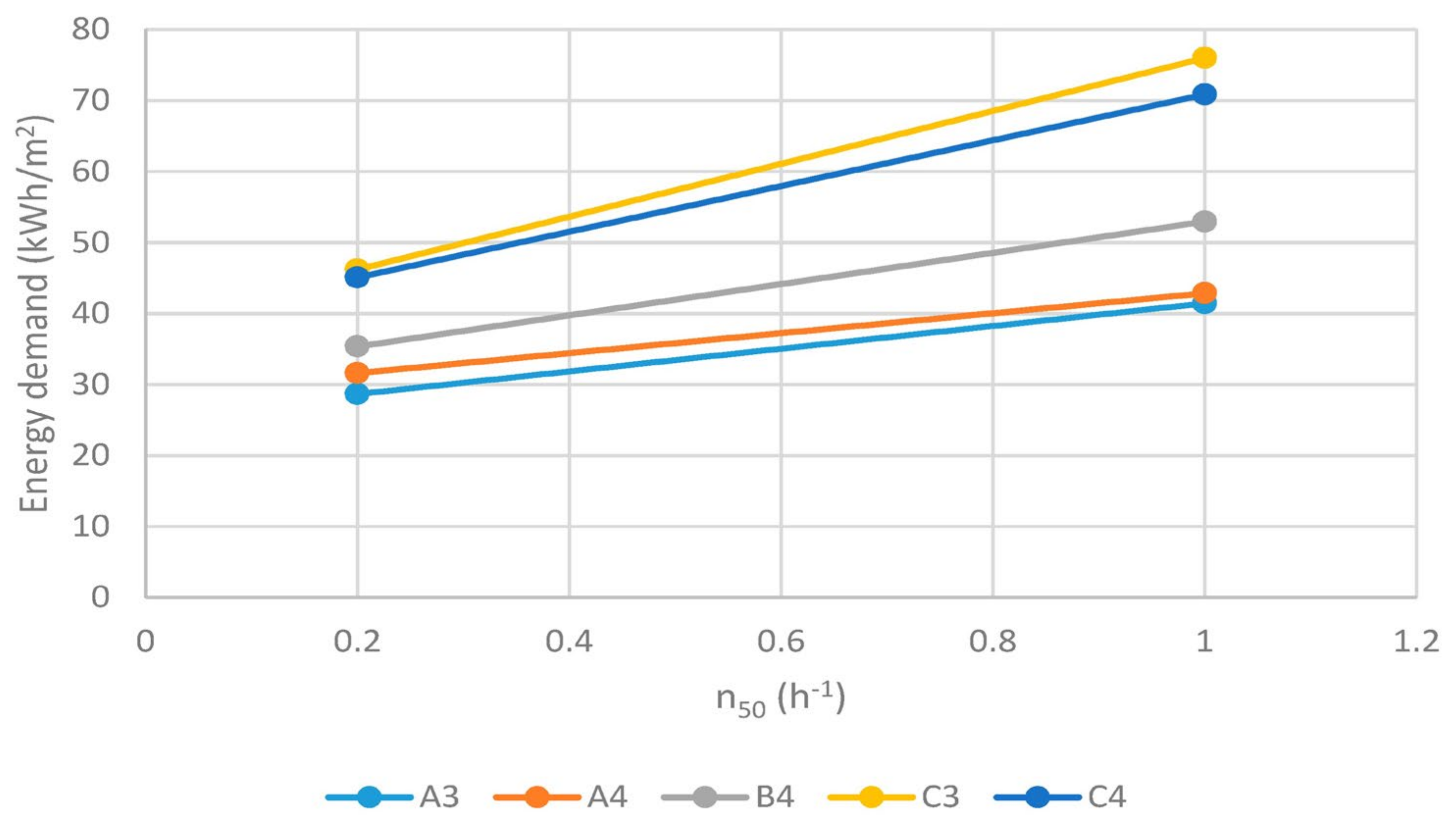
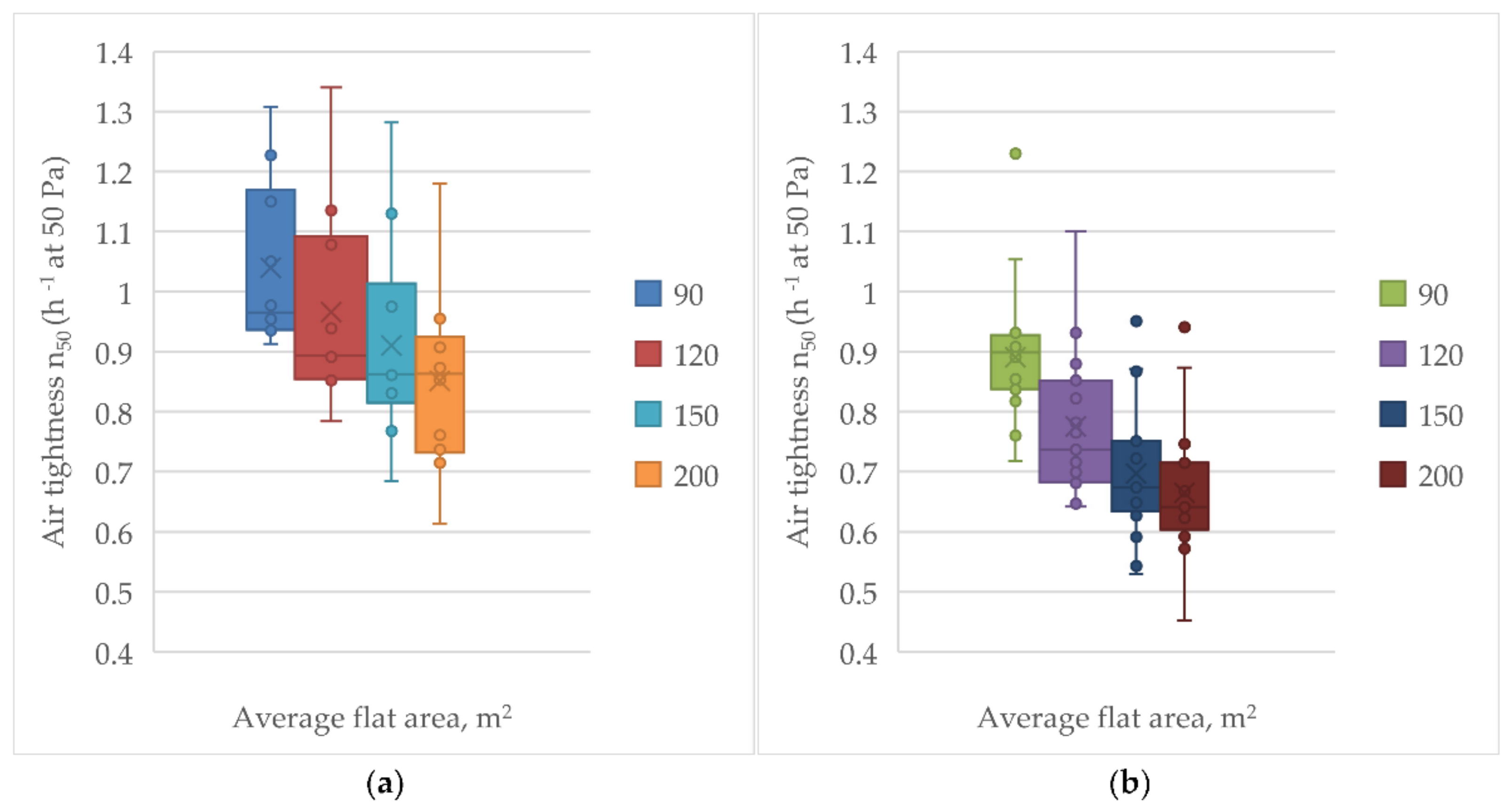
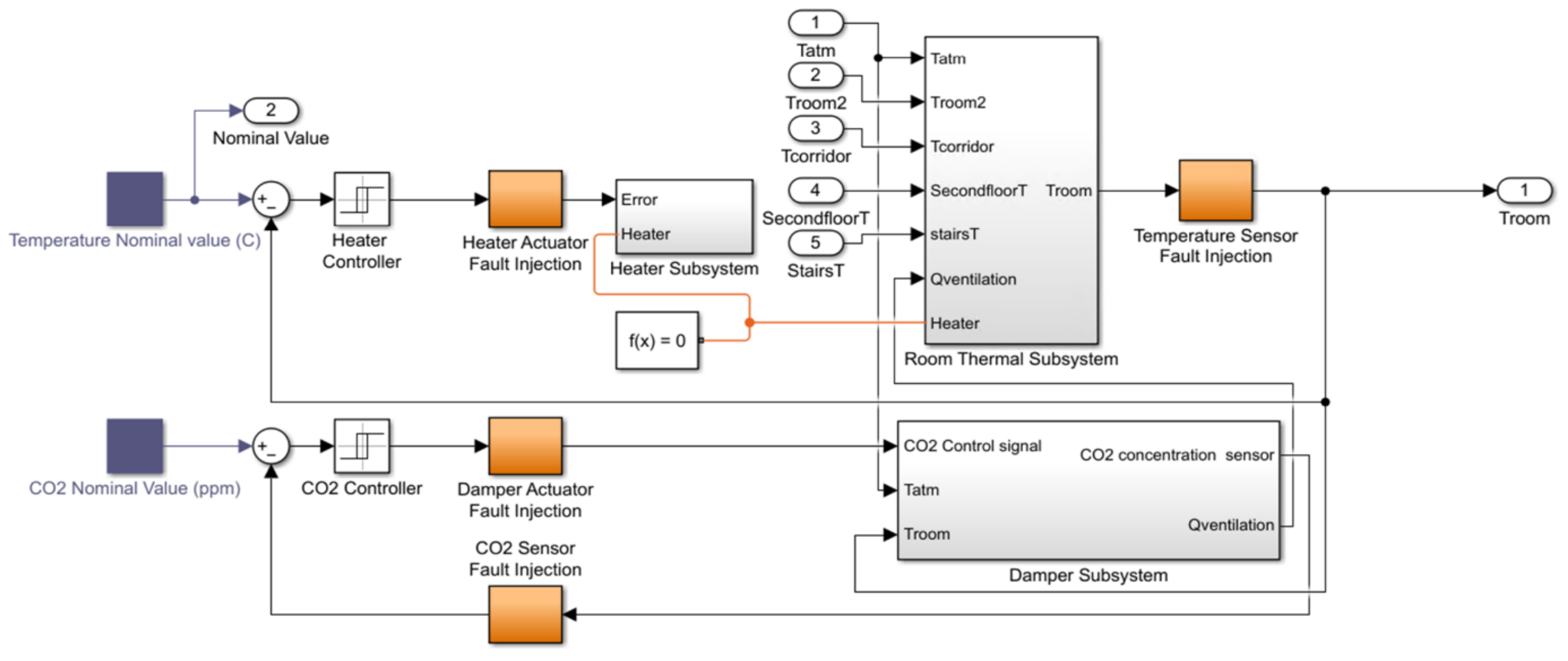
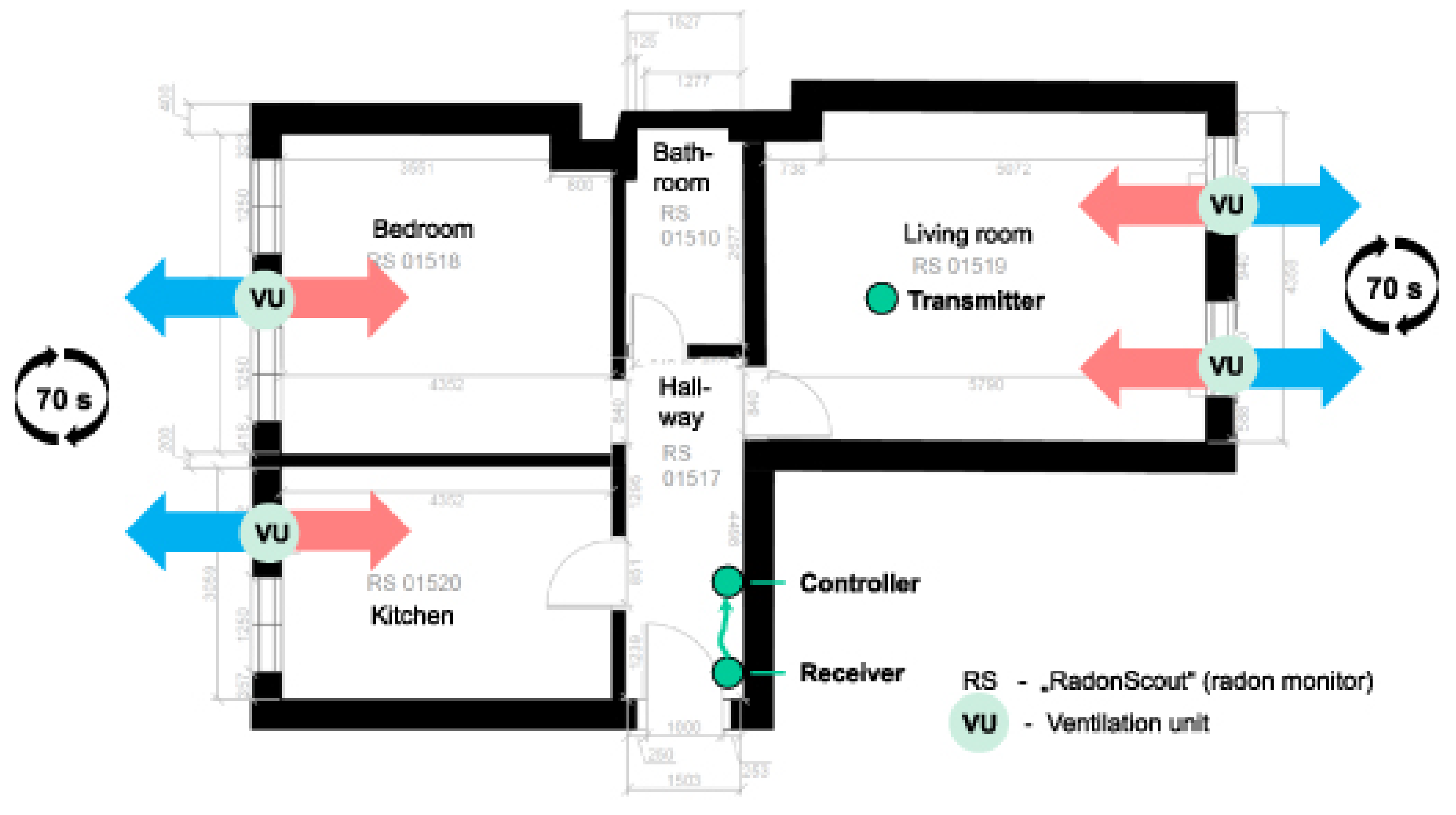
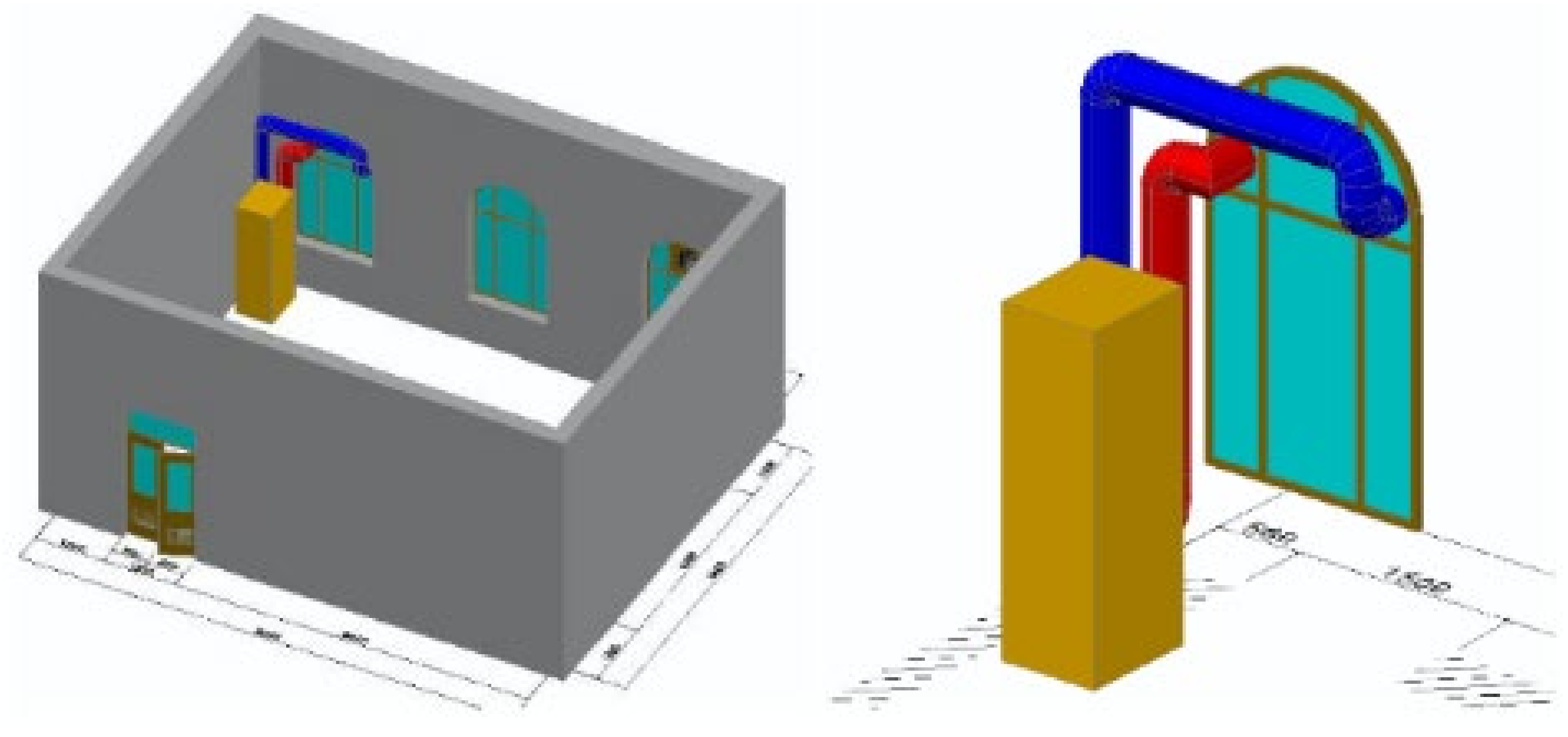
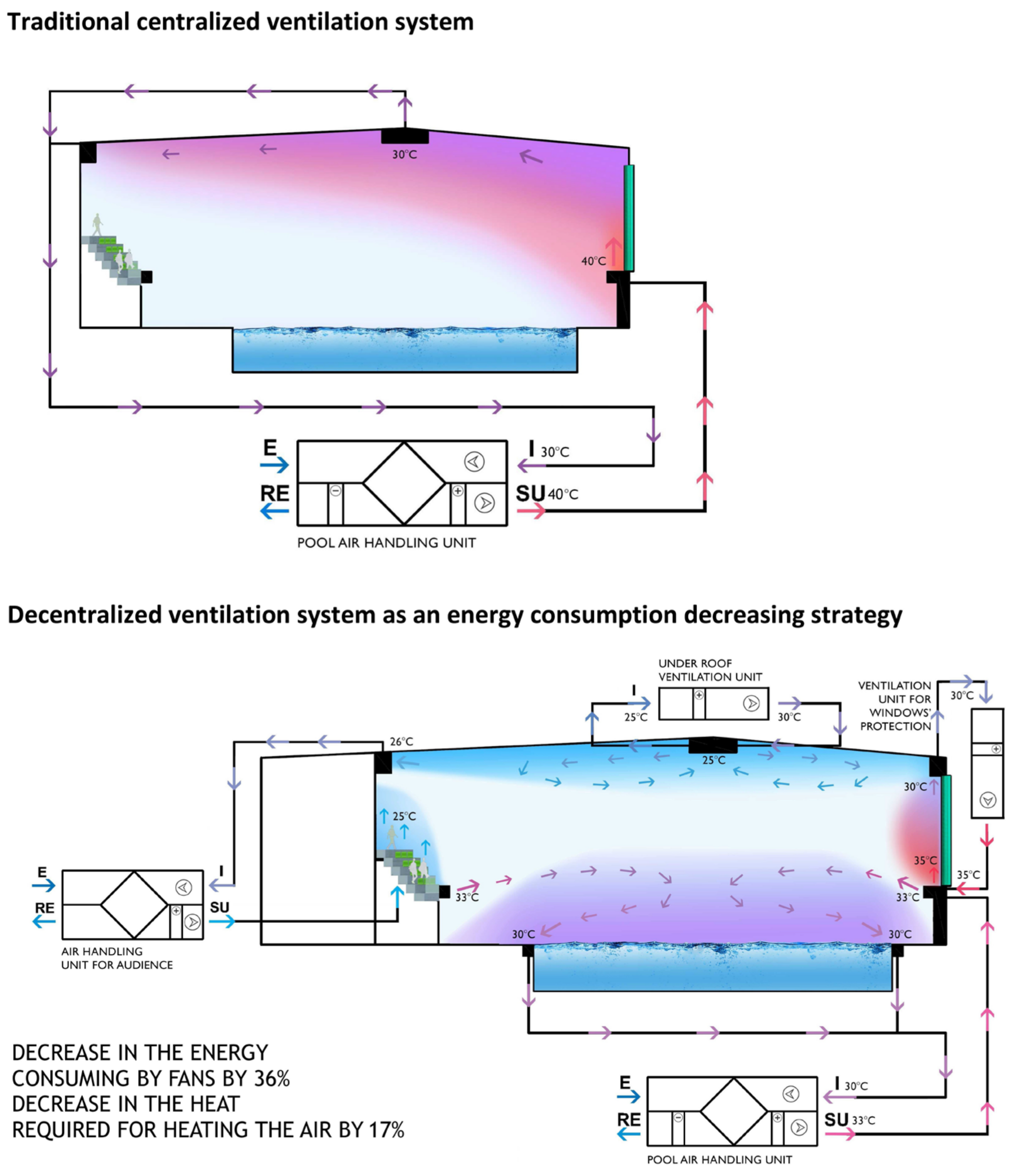
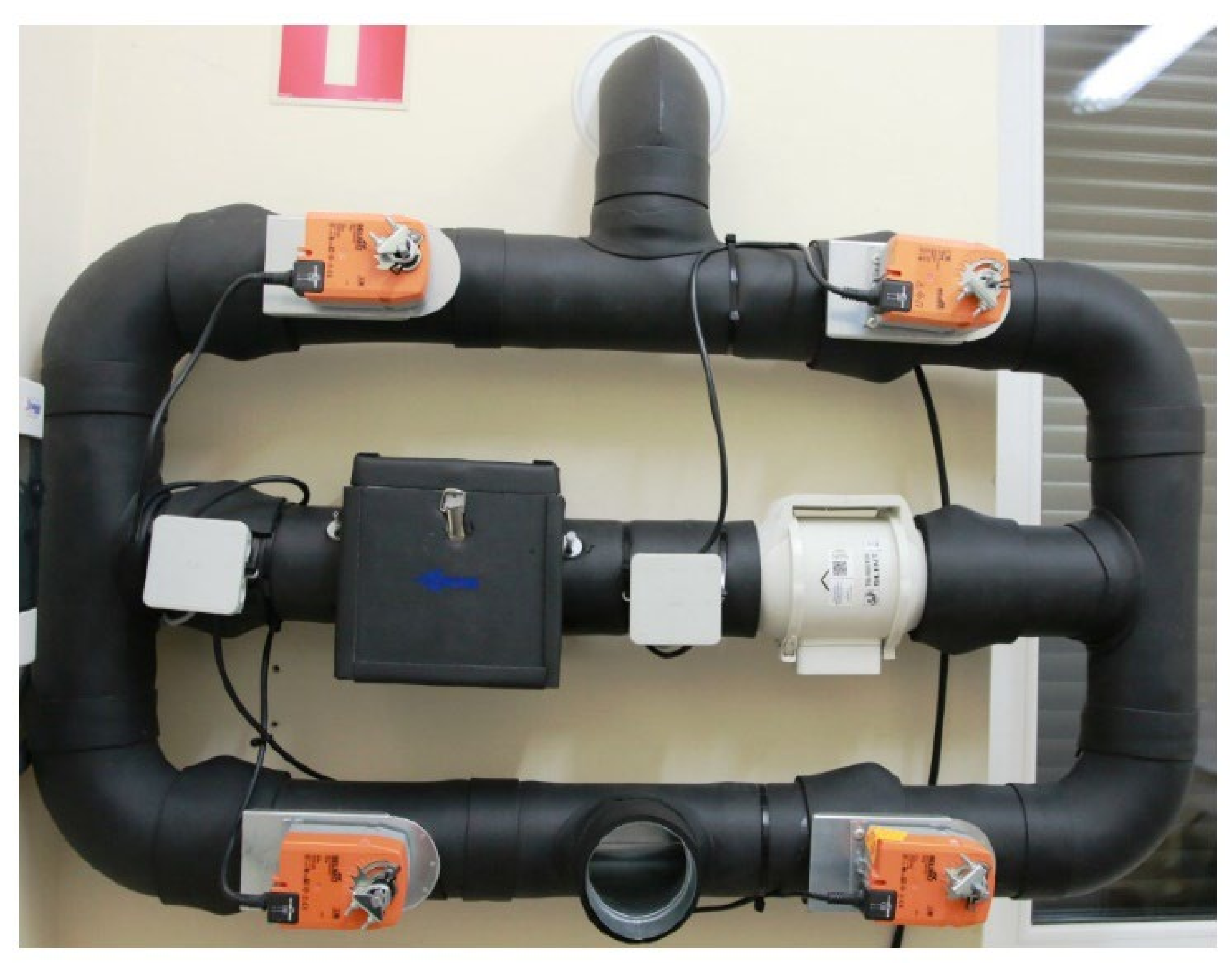


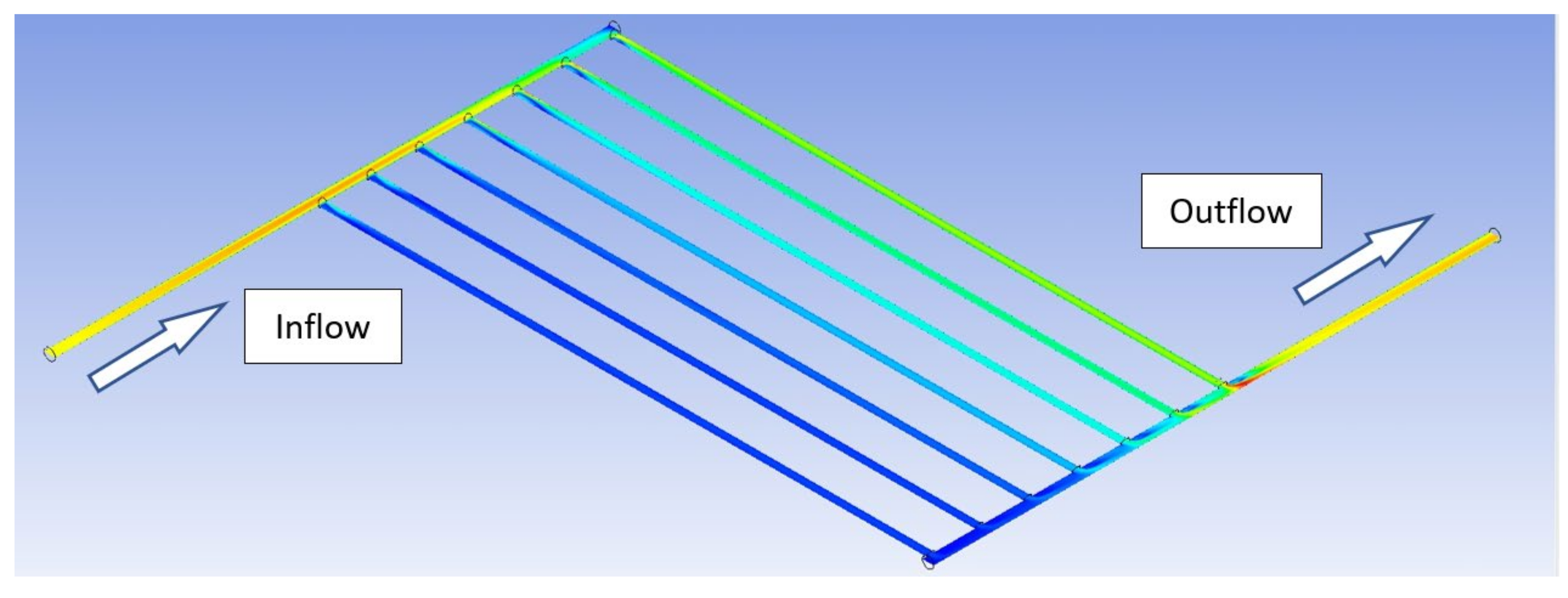
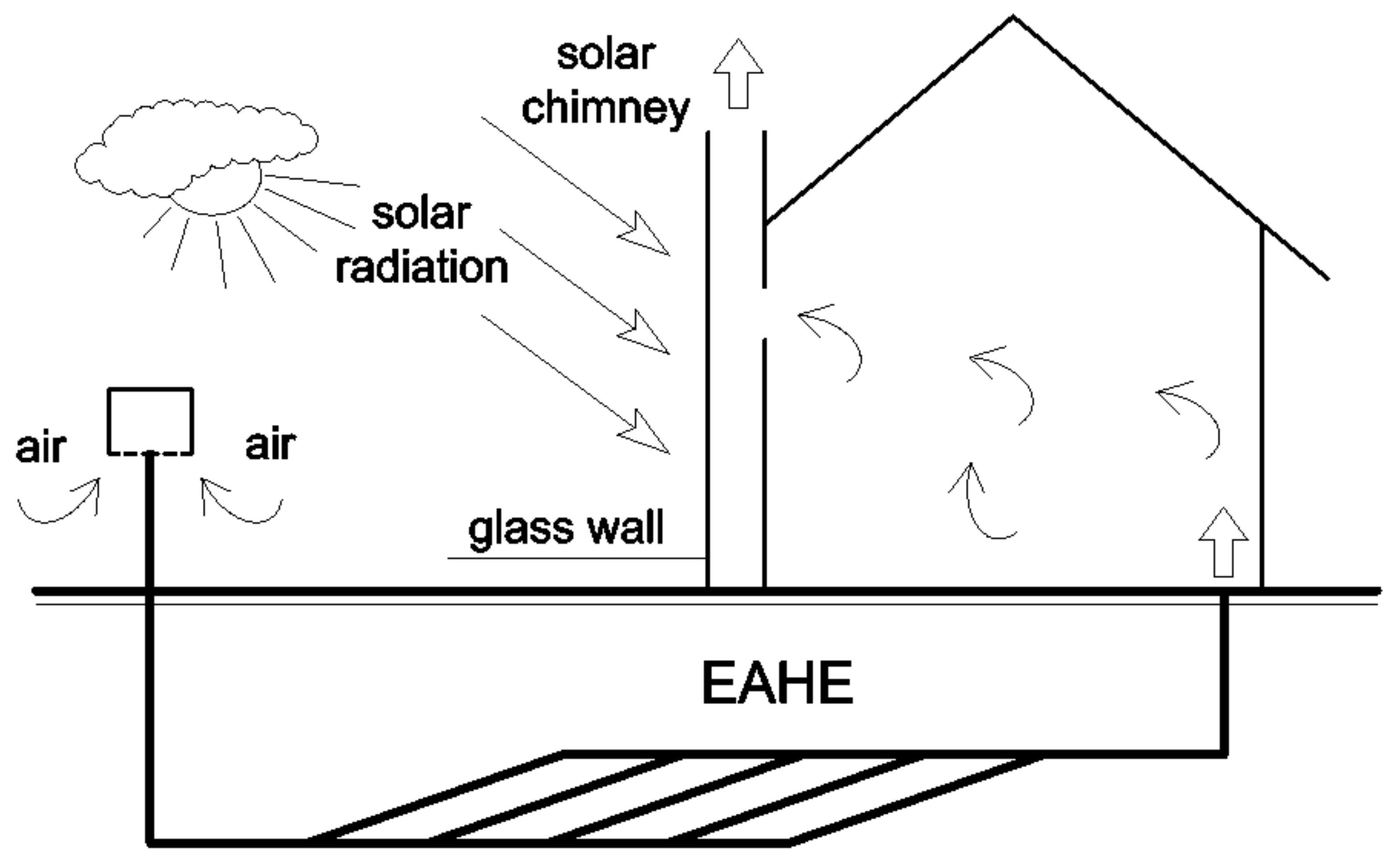
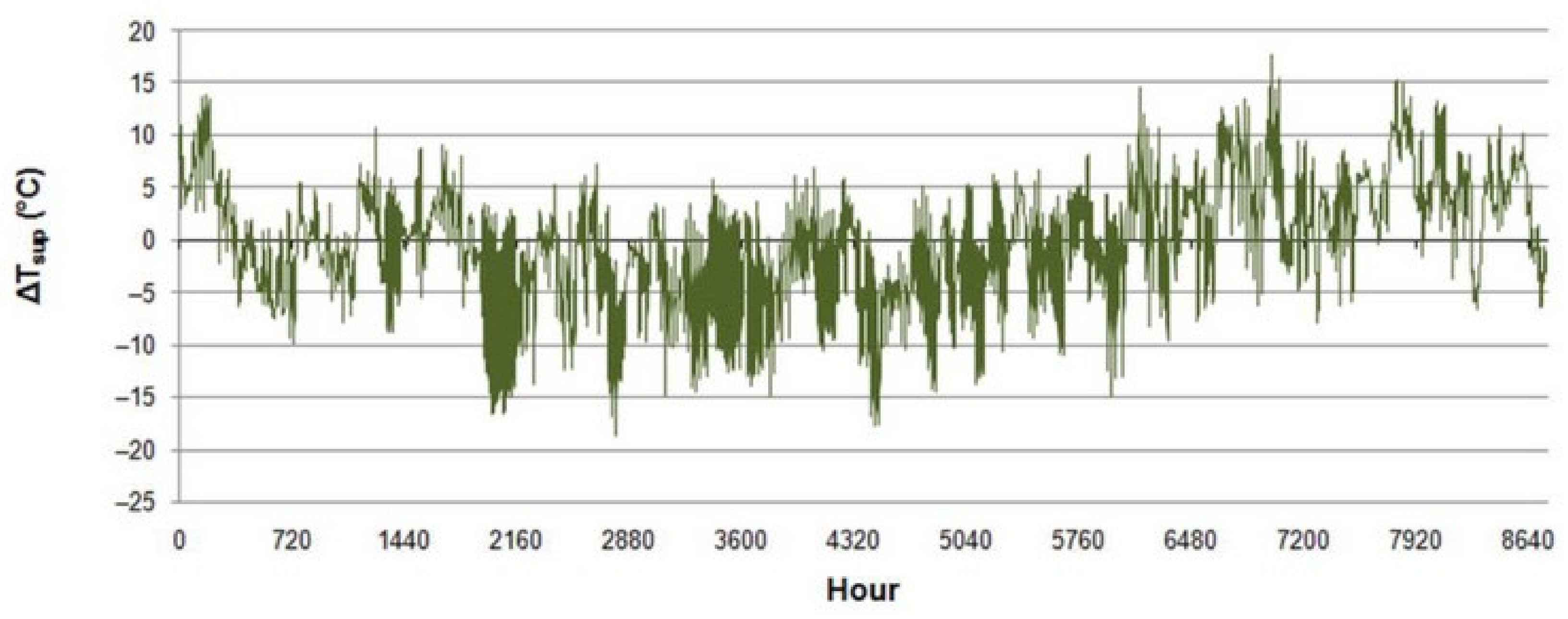
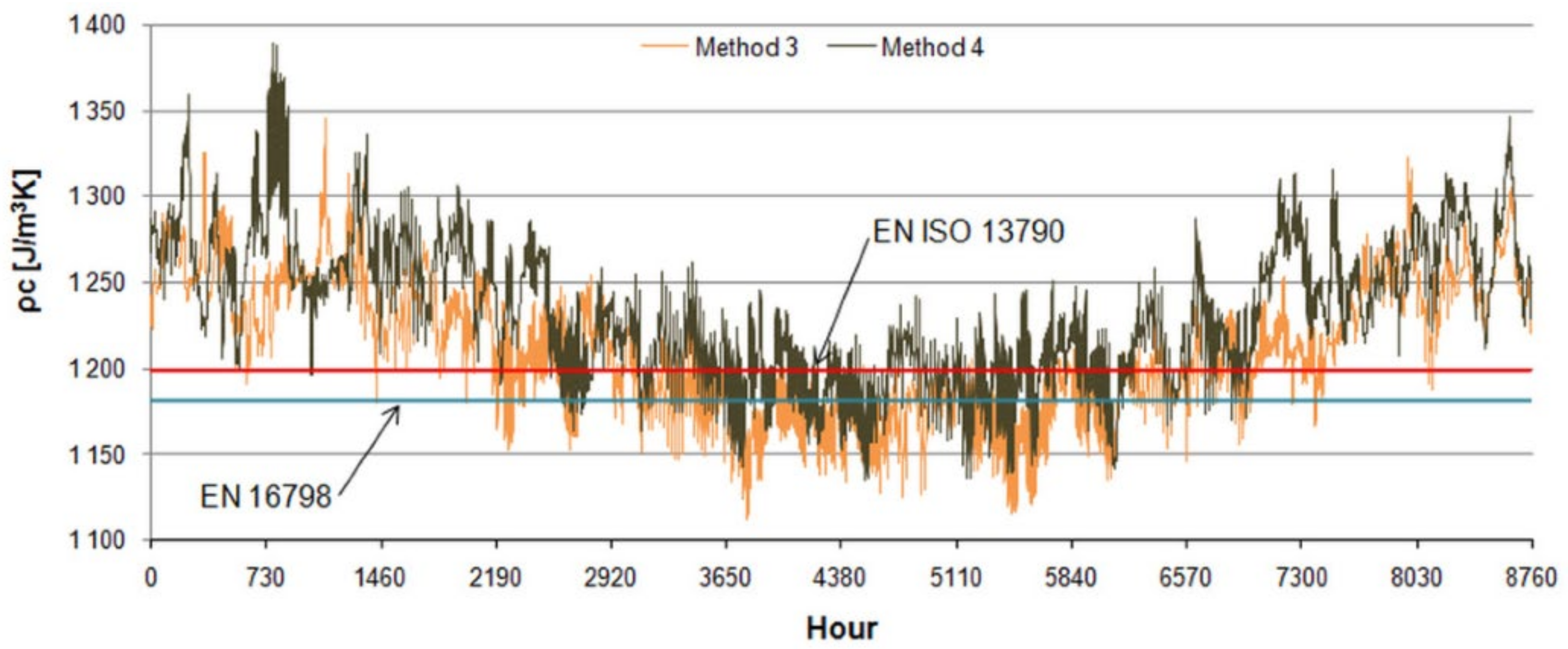
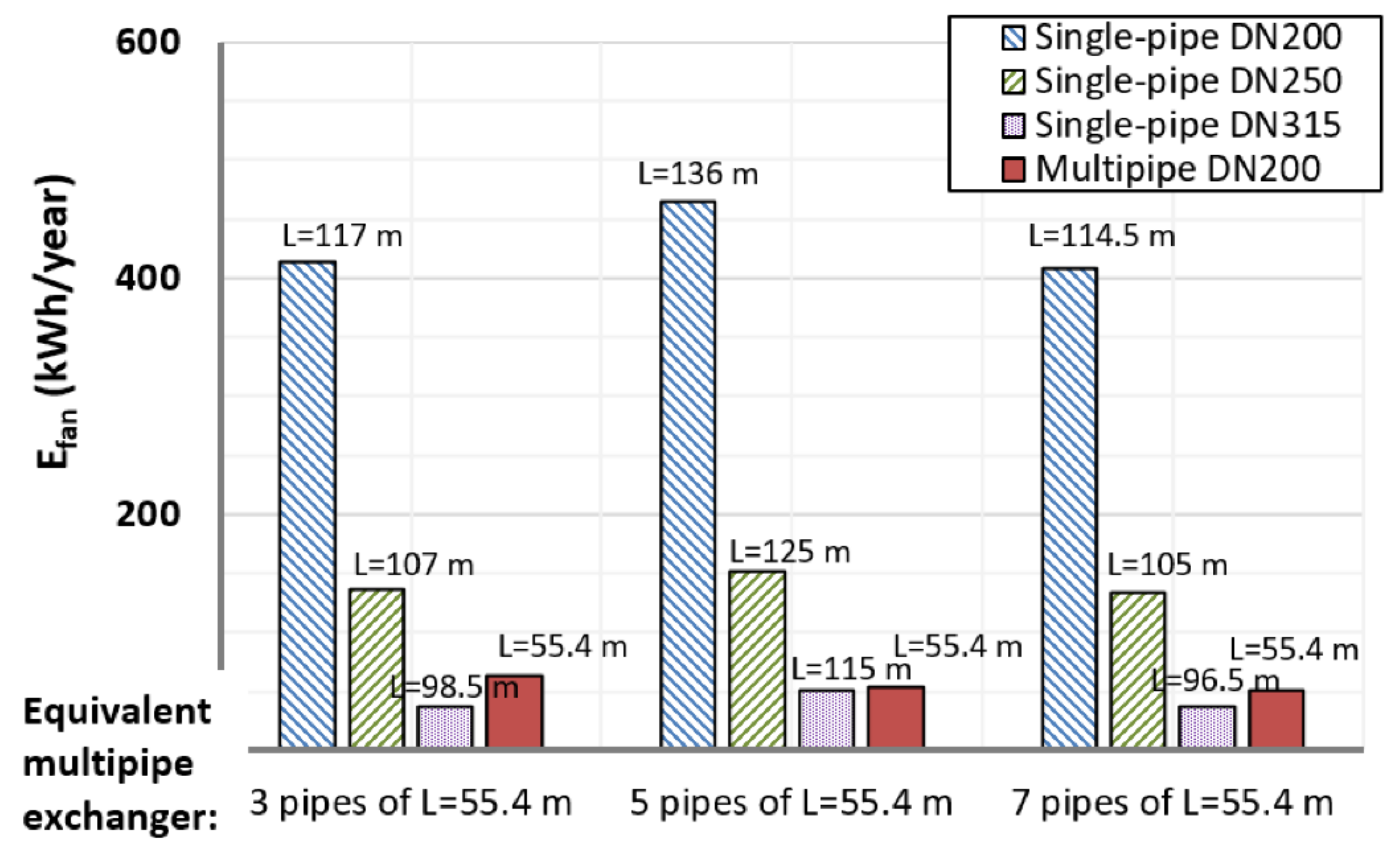
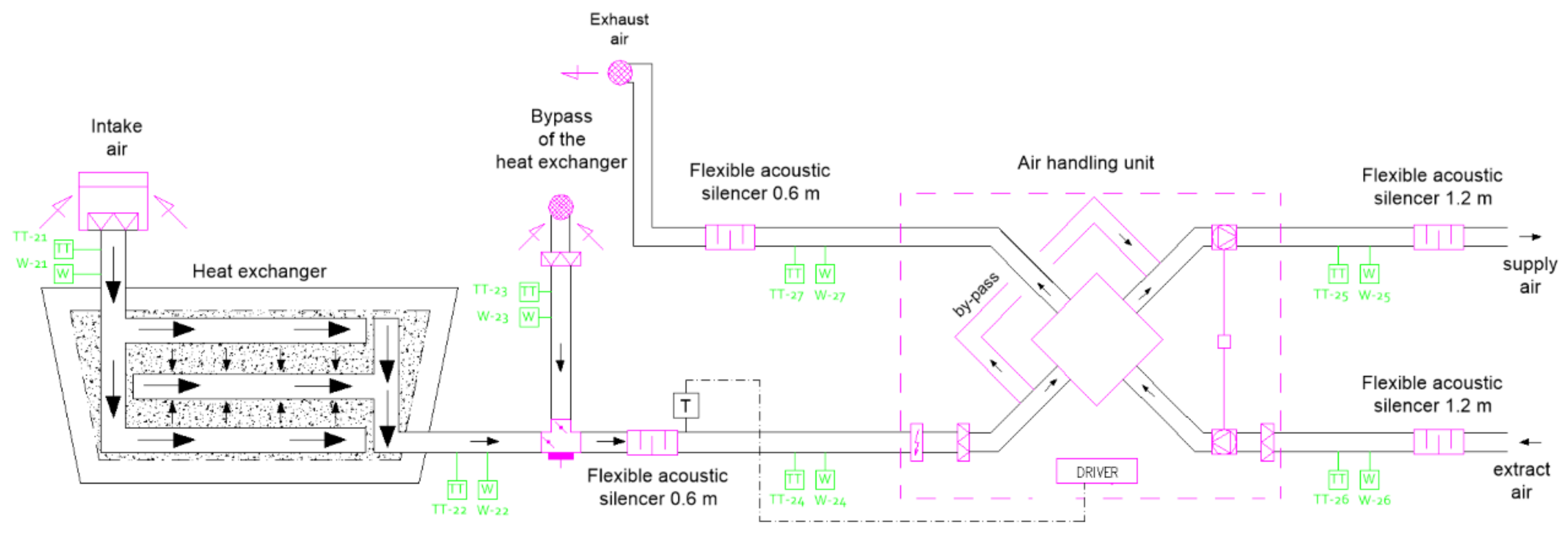
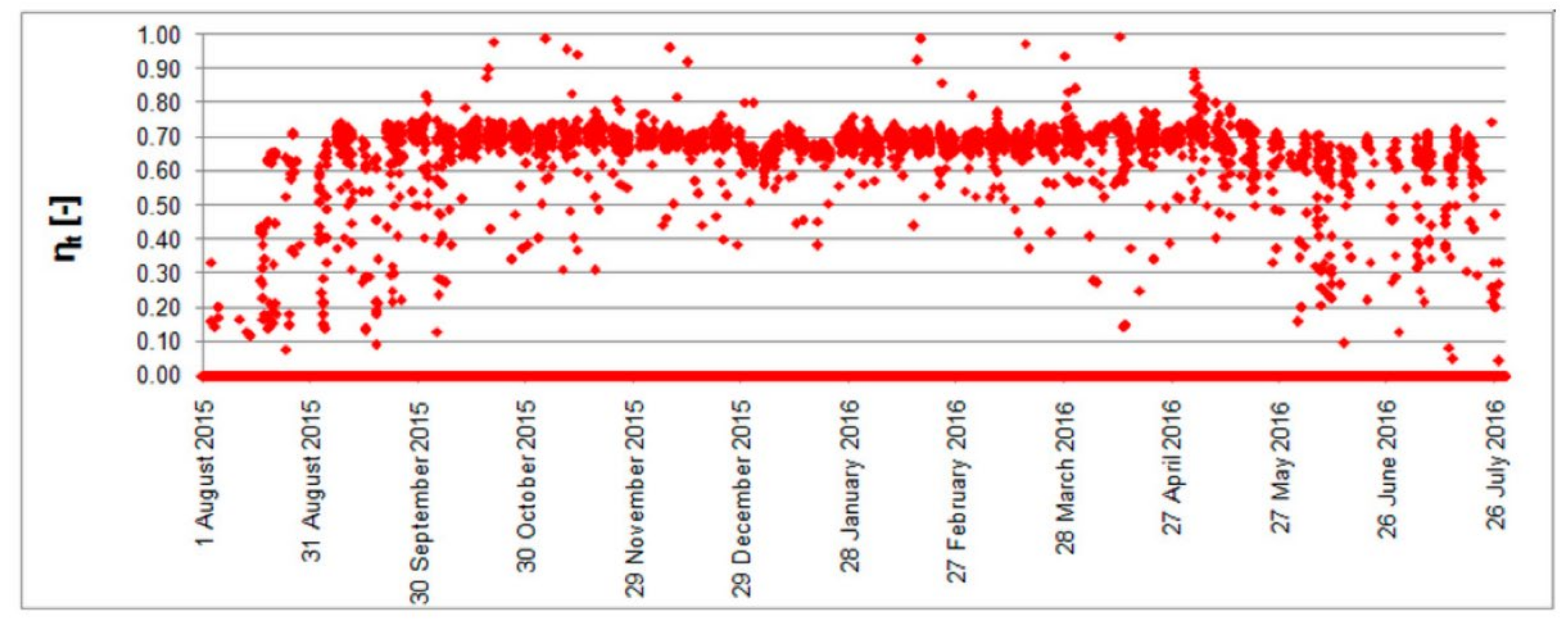
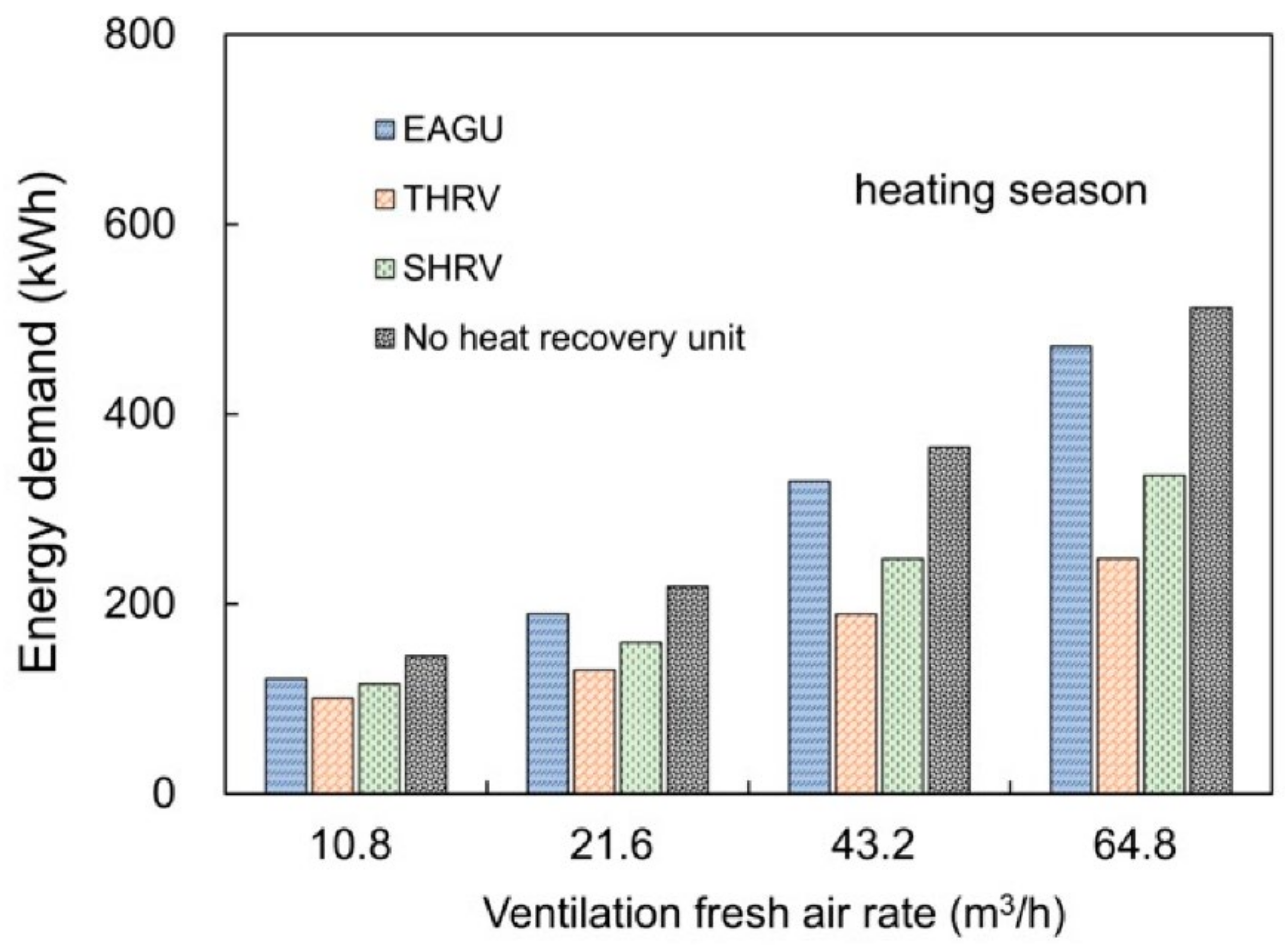
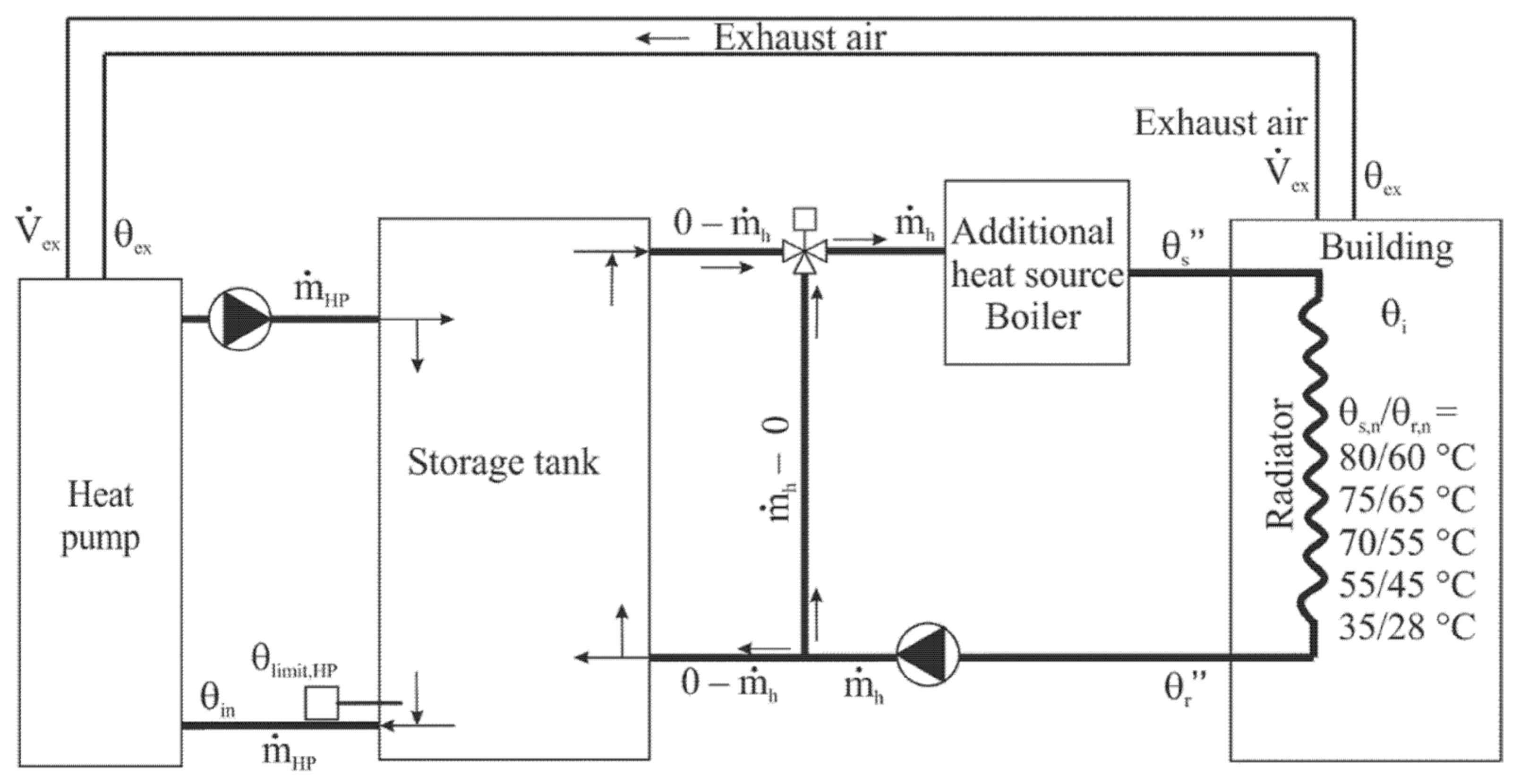
| Authors, Year | Title | Journal | Citations | Keywords |
|---|---|---|---|---|
| Amanowicz Ł., Ratajczak K. 2021, [2] | Practical aspects of designing energy-saving ventilation systems (in Polish) | Rynek Instalacyjny | 2 | Ventilation, energy-efficient buildings, energy performance, PE indicator, technical conditions |
| Verbeke S., Audenaert A. 2020, [20] | A prospective Study on the Evolution of Airtightness in 41 low energy Dwellings | E3S Web of Conferences | 2 | - |
| Simson R. 2020, [22] | The impact of infiltration on heating systems dimensioning in Estonian climate | E3S Web of Conferences | 4 | - |
| Miszczuk A., Heim D. 2020, [23] | Parametric Study of Air Infiltration in Residential Buildings—The Effect of Local Conditions on Energy Demand | Energies | 6 | Airtightness, climate data, building exposure, airflow network, performance simulation |
| Nitijevskis A. et al., 2020, [24] | Overview of large building testing in Baltic countries | E3S Web of Conferences | 0 | - |
| Heim D. et al., 2020, [29] | Modelling building infiltration using the airflow network model approach calibrated by air-tightness test results and leak detection | Building Services Engineering Research & Technology | 2 | Airtightness, building energy conservation, building simulation |
| Zheng X. et al., 2020, [31] | A practical review of alternatives to the steady pressurisation method for determining building airtightness | Renewable and Sustainable Energy Reviews | 19 | Building airtightness, steady pressurisation, blower door, unsteady technique, pulse technique, acoustic method |
| Liu X. et al., 2021, [19] | Energy saving potential for space heating in Chinese airport terminals: The impact of air infiltration | Energy | 21 | Airport terminal, space heating, field investigation, air infiltration, indoor thermal environment, energy saving |
| Moujalled B. et al., 2021, [21] | Mid-term and long-term changes in building airtightness: A field study on low-energy houses | Energy and Buildings | 5 | Airtightness durability, field measurements, building envelope, low-energy house |
| Poza-Casado I. et al., 2021, [25] | Airtightness and energy impact of air infiltration in residential buildings in Spain | International Journal of Ventilation | 6 | Air leakage, blower door, energy impact, residential buildings, fan pressurisation test |
| Paukštys V. 2021, [28] | Airtightness and Heat Energy Loss of Mid-Size Terraced Houses Built of Different Construction Materials | Energies | 1 | Airtightness, blower door, heat energy loss, thermographic photo research, building energy performance |
| Banister C. et al., 2022, [18] | Energy and emissions effects of airtightness for six non-residential buildings in Canada with comparison to contemporary limits and assumptions | Journal of Building Engineering | 0 | Airtightness, air leakage, infiltration, energy effects, building codes, building emissions |
| Mélois A. et al., 2022, [30] | Uncertainty in building fan pressurization tests: Review and gaps in research | Journal of Building Engineering | 1 | - |
| Poza-Casado I. et al., 2022, [32] | An envelope airtightness predictive model for residential buildings in Spain | Building and Environment | 1 | Predictive model, airtightness, blower door, dwellings, database, statistical analysis |
| Authors, Year | Title | Journal | Citations | Keywords |
|---|---|---|---|---|
| Hamid A.A. et al., 2020, [35] | The impact of a DCV-system on the IAQ, energy use, and moisture safety in apartments—a case study | International Journal of Ventilation | 1 | - |
| Lu X. et al., 2020, [49] | A novel simulation-based framework for sensor error impact analysis in smart building systems: A case study for a demand-controlled ventilation system | Applied Energy | 27 | Demand-controlled ventilation (DCV), error impact analysis, sensors, simulation, sensitivity analysis |
| Taal A. et al., 2020, [50] | Fault detection and diagnosis for indoor air quality in DCV systems: Application of 4S3F method and effects of DBN probabilities | Building and Environment | 18 | 4S3F framework, fault detection and diagnosis (FDD), demand-controlled ventilation (DCV), diagnostic Bayesian networks (DBN), building management systems (BMS), energy performance, indoor air quality (IAQ) |
| Abuimara T. et al., 2021,[36] | Exploring the adequacy of mechanical ventilation for acceptable indoor air quality in office buildings | Science and Technology for the Built Environment | 1 | - |
| Bandurski K. et al., 2021, [39] | Difference Between Calculated and Measured Energy Consumption for Heating in Multi-Family Buildings in Poland (in Polish) | Ciepłownictwo, Ogrzewnictwo, Wentylacja | 1 | Performance gap, multi-family residential building, multi-unit residential building, energy certification, building energy performance, occupant behavior, building energy modelling, monthly method, energy-efficient buildings |
| Haddad S. et al., 2021, [41] | On the potential of demand-controlled ventilation system to enhance indoor air quality and thermal condition in Australian school classrooms | Energy and Buildings | 25 | Indoor environmental quality, air quality, thermal comfort, school buildings, ventilation |
| Shin H. et al., 2021, [47] | A study on changes in occupants’ thermal sensation owing to CO2 concentration using PMV and TSV | Building and Environment | 8 | Indoor environmental quality, indoor air quality, CO2 concentration, predicted mean vote (PMV), thermal sensation vote (TSV), discrepancy between TSV and PMV (DV) |
| Lu X. 2022, [33] | Advances in research and applications of CO2-based demand-controlled ventilation in commercial buildings: A critical review of control strategies and performance evaluation | Building and Environment | 2 | CO2 control strategies, demand-controlled ventilation, energy efficiency, performance evaluation, CO2 sensor |
| Alaidroos A. et al., 2022, [37] | Evaluation of the performance of demand control ventilation system for school buildings located in the hot climate of Saudi Arabia | Building Simulation | 3 | Mechanical ventilation, Demand-controlled ventilation (DCV), indoor air quality (IAQ), CO2 concentration, energy efficiency, school buildings |
| Liu P. 2022, [38] | Heat recovery ventilation design limitations due to LHC for different ventilation strategies in ZEB | Building and Environment | 2 | Energy-efficient ventilation, rotary heat exchanger, zero-emission buildings, longitudinal heat conduction |
| Ratajczak K. et al., 2022, [40] | Differences Between Calculated and Measured Energy Use For Heating and Domestic Hot Water Preparation on the Example of Single-Family Buildings (in Polish) | Ciepłownictwo, Ogrzewnictwo, Wentylacja | 0 | Performance gap, single-family buildings, energy certification, energy efficiency calculation, final energy, occupant behaviour, building energy modelling, monthly method, energy-efficient buildings, domestic hot water |
| Zhao W. et al., 2022, [42] | Operational Challenges of Modern Demand-Control Ventilation Systems: A Field Study | Buildings | 0 | demand-controlled ventilation, performance of ventilation system, public buildings, field study |
| Mou J. et al., 2022, [43] | Computational fluid dynamics modelling of airflow and carbon dioxide distribution inside a seminar room for sensor placement | Measurement: Sensors | 1 | Carbon dioxide (CO2) distribution, computational fluid dynamics (CFD), sensor placement, demand-controlled ventilation (DCV) |
| Szczurek A. et al., 2022, [44] | The Detection of Activities Occurring Inside Quick Service Restaurants That Influence Air Quality | Sensors | 1 | Indoor air quality, aensing, pattern recognition |
| Kiamanesh B. et al., 2022, [48] | Realistic Simulation of Sensor/Actuator Faults for a Dependability Evaluation of Demand-Controlled Ventilation and Heating Systems | Energies | 1 | HVAC systems, fault injection, fault scenario generation, fault model, finite-state machine, stateflow |
| Alonso M.A. et al., 2022, [45] | A methodology for the selection of pollutants for ensuring good indoor air quality using the de-trended cross-correlation function | Building and Environment | 6 | IAQ, DCV, CO2, air temperature, RH, PM2.5, formaldehyde |
| Authors, Year | Title | Journal | Citations | Keywords |
|---|---|---|---|---|
| Ratajczak K. et al., 2020, [55] | Energy consumption decreasing strategy for indoor swimming pools—Decentralized Ventilation system with a heat pump | Energy and Buildings | 15 | - |
| Bonato, P. 2020, [57] | Modelling and simulation-based analysis of a façade-integrated decentralized ventilation unit | Journal of Building Engineering | 14 | - |
| Carbonare N. et al., 2020, [60] | Simulation and Measurement of Energetic Performance in Decentralized Regenerative Ventilation Systems | Energies | 0 | Decentralized ventilation, heat recovery, honeycomb heat exchanger, computational fluid dynamics, Modelica |
| Zender-Świercz E. 2020, [61] | Improvement of indoor air quality by way of using decentralised ventilation | Journal of Building Engineering | 15 | Decentralised façade, ventilation systems |
| Ratajczak K. et al., 2020, [63] | Assessment of the air streams mixing in wall-type heat recovery units for ventilation of existing and refurbishing buildings toward low energy buildings | Energy and Buildings | 20 | Integrated wall-type air intake-outtake unit, air streams mixing assessment, indoor air quality, heat recovery ventilation unit, energy efficiency in buildings, thermomodernization |
| Zemitis J. Bogdanovics R. 2020, [69] | Heat-recovery efficiency of local decentralized ventilation devices | Magazine of Civil Engineering | 0 | Decentralized ventilation, heat recovery, efficiency, pressure difference |
| Dehnert J. 2021, [52] | Radon protection in apartments using a ventilation system wireless-controlled by radon activity concentration | Journal of Radiological Protection | 2 | - |
| Ratajczak K. Basińska M. 2021, [54] | The well-being of children in nurseries does not have to be expensive: The real costs of maintaining low carbon dioxide concentrations in nurseries | Energies | 4 | Decentralized ventilation, façade ventilation |
| Fu N. 2021, [58] | Comparative Modelling Analysis of Air Pollutants, PM2.5 and Energy Efficiency Using Three Ventilation Strategies in a High-Rise Building: A Case Study in Suzhou, China | Sustainability | 2 | Decentralized ventilation system, centralized ventilation, indoor air quality, high-rise building, infiltration, air filter efficiency |
| Filis V. et al., 2021, [59] | The impact of wind pressure and stack effect on the performance of room ventilation units with heat recovery | Energy and Buildings | 6 | Decentralized ventilation, room ventilation units, façade ventilation, heat recovery, rotary heat exchanger, stack effect, centrifugal fans, axial fans, humidity-controlled damper |
| Carbonare N. 2021, [64] | Design and implementation of an occupant-centered self-learning controller for decentralized residential ventilation systems | Building and Environment | 3 | Mechanical ventilation, occupant-centered control, adaptive control, building simulation, residential buildings, occupant behavior |
| Dudkiewicz E. et al., 2021, [65] | Users’ Sensations in the Context of Energy Efficiency Maintenance in Public Utility Buildings | Energies | 1 | CO2 concentration, lecture room, students’ preferences, sultriness, thermal comfort; willingness to work |
| Zednre-Świercz E. 2021, [67] | Assessment of Indoor Air Parameters in Building Equipped with Decentralised Façade Ventilation Device | Energies | 4 | Air quality, CFD simulation, decentralised façade ventilation systems |
| Pekdogan T. 2021, [68] | Experimental investigation of a decentralized heat recovery ventilation system | Journal of Building Engineering | 6 | Indoor air quality, ventilation, decentralized heat recovery, sensible energy storage |
| Pekdogan T. 2021, [70] | Experimental investigation on heat transfer and air flow behaviour of latent heat storage unit in a I integrated ventilation system | Journal of Energy Storage | 2 | - |
| Altendorf D. 2022, [51] | Decentralised ventilation efficiency for indoor radon reduction considering different environmental parameters | Isotopes in Environmental and Health Studies | 0 | Decentralised ventilation |
| Ratajczak K. 2022, [53] | Ventilation Strategy for Proper IAQ in Existing Nurseries Buildings—Lesson Learned from the Research during COVID-19 Pandemic | Aerosols and Air Quality Research | 3 | Ventilation strategy, nurseries, indoor air quality, COVID-19 pandemic, decentralized ventilation |
| Zender-Świercz E. et al., 2022, [66] | Assessment of Thermal Comfort in Rooms Equipped with a Decentralised Façade Ventilation Unit | Energies | 0 | Thermal comfort, decentralised façade ventilation units, storage heat exchangers for heat recovery |
| Shahrzad S. 2022, [71] | Parametric optimization of multifunctional integrated climate-responsive opaque and ventilated façades using CFD simulations | Applied Thermal Engineering | 7 | Decentralized ventilation |
| Paper | Day-Time Airflow | Night-Time Airflow | Thermal Effect |
|---|---|---|---|
| [87] | 260–280 m3/h | 50–100 m3/h | Reduction in indoor air temperature by 4.4 °C in summer and increase by 6.4 °C in winter |
| [88] | 209 m3/h | 139 m3/h | Indoor air temperature 19.7–22.7 °C with outdoor air temperature 12.5–25.0 °C |
| [89] | 291.5 m3/h (summer) 388.8 m3/h (winter) | 56.5 m3/h (summer), 90.9 m3/h (winter) | The efficiency of obtaining energy from the ground was 86% in summer and 61% in winter |
| [90] | 252 m3/h (pipes diameter 0.3 m) 166 m3/h (pipes diameter 0.2 m) | 50–70 m3/h (pipes diameter 0.3 m) 45–50 m3/h (pipes diameter 0.2 m) | Reduction in the temperature of the supply air to the room by 12.5–13 K, translating into a cooling power of 1179 W for 0.3 m pipe diameter and 629 W for 0.2 m pipe diameter |
| [91] | 252 m3/h | 50–70 m3/h | Reduction in room supply air temperature by 12.5 K, maximum total cooling capacity (latent + sensible): 1398 W |
| [92] | 209.5 m3/h with PCM 255 m3/h without PCM | 95 m3/h with PCM 50 m3/h without PCM | Air temperatures at the outlet of EAHE with and without PCM of 24.8–26.5 °C and 24.4–27.2 °C, respectively; more stable indoor thermal comfort with PCM |
| Authors, Year | Title | Journal | Citations | Keywords |
|---|---|---|---|---|
| Kalus D. et al., 2022 [79] | Experience in Researching and Designing an Innovative Way of Operating Combined Building–Energy Systems Using Renewable Energy Sources | Applied Sciences | 0 | Combined building–energy systems, RES, energy roof, ground-source heat storage; peak heat source, ground-heat recovery, air–heat exchanger, cooling circuits |
| Wei H, et al., 2020, [95] | Field experiments on the cooling capability of earth-to-air heat exchangers in hot and humid climate | Applied Energy | 35 | Earth-to-air heat exchanger, renewable energy, cooling capacity, configuration parameter, hot and humid climate |
| Sakhri N. et al., 2020, [96] | Experimental investigation of the performance of earth-to-air heat exchangers in arid environments | Journal of Arid Environments | 27 | Earth-to-air heat exchanger, soil temperature, arid region, hygrometry regime, natural ventilation |
| Amanowicz Ł. Wojtkowiak J. 2020, [102] | Thermal performance of multi-pipe earth-to-air heat exchangers considering the non-uniform distribution of air between parallel pipes | Geothermics | 16 | Multi-pipe earth-to-air heat exchanger, airflow distribution, thermal performance, tnergy efficiency, multi-tube |
| Amanowicz Ł. Wojtkowiak J. 2020, [103] | Approximated flow characteristics of multi-pipe earth-to-air heat exchangers for thermal analysis under variable airflow conditions | Renewable Energy | 21 | Earth-to-air heat exchanger, multi-pipe, flow characteristics, airflow distribution, thermal analysis |
| Soares N. et al., 2021, [84] | Advances in standalone and hybrid earth-air heat exchanger (EAHE) systems for buildings: A review | Energy and Buildings | 12 | Earth-air heat exchanger (EAHE) hybrid system, geothermal energy, design parameters, operation conditions, thermal performance |
| Li Y. et al., 2021, [91] | An experimental investigation on the passive ventilation and cooling performance of an integrated solar chimney and earth–air heat exchanger | Renewable Energy | 20 | Earth–air heat exchanger, solar chimney, natural ventilation, cooling capacity, full-scale experimental study |
| Long T. et al., 2021, [93] | Numerical investigation of the working mechanisms of solar chimney coupled with earth-to-air heat exchanger (SCEAHE) | Solar Energy | 8 | Solar chimney, earth-to-air heat exchanger, passive cooling, natural ventilation, numerical simulation |
| Pouranian F. et al., 2021, [94] | Performance assessment of solar chimney coupled with earth-to-air heat exchanger: A passive alternative for an indoor swimming pool ventilation in hot-arid climate | Applied Energy | 7 | Indoor swimming pool, renewable energies, solar chimney, passive ventilation, thermal comfort, computational fluid dynamics |
| Skotnicka-Siepsiak A. 2021, [99] | An Evaluation of the Performance of a Ground-to-Air Heat Exchanger in Different Ventilation Scenarios in a Single-Family Home in a Climate Characterized by Cold Winters and Hot Summers | Energies | 4 | Ground-to-air heat exchanger, sustainable indoor ventilation system, energy-efficient ventilation |
| Amanowicz Ł. Wojtkowiak J. 2021, [72] | Comparison of Single- and Multipipe Earth-to-Air Heat Exchangers in Terms of Energy Gains and Electricity Consumption: A Case Study for the Temperate Climate of Central Europe | Energies | 8 | Earth-to-air heat exchangers, pressure losses, multipipe, renewable energy, geothermal energy, building energy performance, ventilation |
| Qi D. et al., 2021, [106] | Comparative analysis of earth to air heat exchanger configurations based on uniformity and thermal performance | Applied Thermal Engineering | 15 | Multi-pipe earth to air heat exchanger (MEAHE), uniformity, thermal performance, pressure drop |
| Mihalakakou G. et al., 2022, [83] | Applications of earth-to-air heat exchangers: A holistic review | Renewable and Sustainable Energy Reviews | 11 | Earth-to-air heat exchangers, studies of EAHE Systems, experimental studies, hybrid EAHE Systems, economic assessment |
| Radomski B. et al., 2022, [81] | The Direct-Contact Gravel, Ground, Air Heat Exchanger—Application in Single-Family Residential Passive Buildings | Energies | 0 | Air direct-contact; gravel; ground heat exchanger; heating and cooling support; passive buildings |
| Ramalho J. et al., 2022, [85] | Accessing the thermal performance of Earth–air heat exchangers surrounded by galvanized structures | Sustainable Energy Technologies and Assessments | 0 | Earth–air heat exchangers, (EAHE), fins, galvanized structures, thermal conductivity, thermal performance, numerical simulations |
| Gao X. et al., 2022, [86] | Thermal potential improvement of an earth-air heat exchanger (EAHE) by employing backfilling for deep underground emergency ventilation | Energy | 3 | Geothermal, EAHE system backfilling, energy-efficiency ventilation, deep underground buildings |
| Long T. et al., 2022, [87] | Numerical simulation of diurnal and annual performance of coupled solar chimney with earth-to-air heat exchanger system | Applied Thermal Engineering | 2 | Solar chimney, earth-to-air heat exchanger, diurnal and annual performance, dynamic simulation |
| Long T. et al., 2022, [88] | Natural ventilation performance of solar chimney with and without earth-air heat exchanger during transition seasons | Energy | 7 | Earth–air heat exchanger, solar chimney, buoyancy force, natural ventilation, indoor thermal environment |
| Bai Y. et al., 2022, [89] | Experimental investigation of natural ventilation characteristics of a solar chimney coupled with earth-air heat exchanger (SCEAHE) system in summer and winter | Renewable Energy | 2 | Solar chimney, earth-air heat exchanger, natural ventilation, summer and winter, experimental study |
| Long T. et al., 2022, [90] | Investigation on the cooling performance of a buoyancy driven earth-air heat exchanger system and the impact on indoor thermal environment | Applied Thermal Engineering | 3 | Earth-air heat exchanger, solar chimney, thermal mass, buoyancy force, indoor thermal environment |
| Long T. et al., 2022, [92] | Benefits of integrating phase-change material with solar chimney and earth-to-air heat exchanger system for passive ventilation and cooling in summer | Journal of Energy Storage | 3 | Solar chimney, earth-to-air heat exchanger, phase-change material, passive ventilation passive cooling |
| Belloufi Y. et al., 2022, [97] | Transient assessment of an earth air heat exchanger in warm climatic conditions | Geothermics | 2 | Earth air heat exchanger, transient thermal performance, continuous operation, derating factor, summer cooling |
| Ahmed SF. et al., 2022, [98] | Thermal performance of building-integrated horizontal earth-air heat exchanger in a subtropical hot humid climate | Geothermics | 2 | Building energy consumption, ground heat exchanger, thermal modelling, thermal performance, renewable energy, cnergy savings |
| Michalak P. 2022, [100] | Hourly Simulation of an Earth-to-Air Heat Exchanger in a Low-Energy Residential Building | Energies | 4 | Earth-to-air heat exchanger; EAHE, EAHX, outlet air temperature, ground temperature, EN 16798-5, EN ISO 13790, 5R1C model, bypass |
| Michalak P. 2022, [101] | Impact of Air Density Variation on a Simulated Earth-to-Air Heat Exchanger’s Performance | Energies | 1 | Earth-to-air heat exchanger, air density, specific heat of air, barometric formula, EAHE, outlet temperature, ground temperature, EN ISO 13790, 5R1C model, hourly simulation |
| Qi D. et al., 2022, [107] | Structural optimization of multi-pipe earth to air heat exchanger in greenhouse | Geothermics | 5 | Multi-pipe parallel earth-to-air heat exchanger, air distribution, heat exchanger performance, greenhouse |
| Authors Year | Title | Journal | Citations | Keywords |
|---|---|---|---|---|
| Cepiński W. et al., 2020, [126] | Waste heat recovery by electric heat pump from exhausted ventilating air for domestic hot water in multi-family residential buildings | Annual Set The Environment Protection | 2 | Air-to-water electric heat pump, waste heat recovery, heat recovery in ventilation, domestic hot water, TRNSYS |
| Zender–Świercz E. 2021, [119] | A Review of Heat Recovery in Ventilation | Energies | 15 | Heat recovery, ventilation systems, recovery efficiency, energy-consumption |
| Michalak, P. 2021, [108] | Annual Energy Performance of an Air Handling Unit with a Cross-Flow Heat Exchanger | Energies | 3 | Air-handling unit, cross-flow heat exchanger, heat recovery, temperature effectiveness, temperature efficiency, EN 308, ventilation loss |
| Kowalski P. et al., 2021, [11] | Waste Heat Recovery by Air-to-Water Heat Pump from Exhausted Ventilating Air for Heating of Multi-Family Residential Buildings | Energies | 1 | TRNSYS, air-to-water electric heat pump, AWHP, hybrid heat source, waste heat, building energy performance, primary energy, exhaust ventilation, energy efficiency |
| Bai H.Y. 2022, [118] | A review of heat recovery technologies and their frost control for residential building ventilation in cold climate regions | Renewable and Sustainable Energy Reviews | 9 | Heat recovery, cold climate, indoor air quality, frosting control, energy-efficient ventilation |
| Li J. et al., 2022, [109] | A review of air-to-air membrane energy recovery technology for building ventilation | Energy and Buildings | 3 | Energy recovery, air-to-air membrane, moisture transfer effectiveness, ventilation |
| Gurubalan A., et al., 2022, [110] | Performance Improvement of Membrane Energy Exchanger Using Ultrasound for Heating, Ventilation, and Air Conditioning Application | Journal of Thermal Science and Engineering Applications | 0 | Ultrasound, energy exchanger, membrane dehumidifier, membrane humidifier, membrane energy recovery ventilator, energy efficiency, energy systems, heat and mass transfer, thermal systems |
| Liu P. et al., 2022, [111] | Development and optimization of highly efficient heat recoveries for low carbon residential buildings | Energy and Buildings | 4 | Energy-efficient ventilation heat recovery, heat wheel, low-carbon buildings |
| Cho H.J., 2022, [112] | Development of empirical models to predict latent heat exchange performance for hollow fiber membrane-based ventilation system | Applied Thermal Engineering | 0 | Air-to-air hollow fiber, membrane, energy recovery ventilation, latent heat exchanger, experimental analysis, empirical models |
| Tang Y et al., 2022, [113] | Performance prediction of a novel double-glazing PV curtain wall system combined with an air handling unit using exhaust cooling and heat recovery technology | Energy Conversion and Management | 3 | Solar energy, AHU, double-skin PV façade, exhaust air, heat recovery |
| Chen Y, et al., 2022, [114] | Energy saving potential of passive dehumidification system combined with energy recovery ventilation using renewable energy | Energy and Buildings, | 1 | Passive dehumidification, moisture adsorption, moisture desorption, energy recovery ventilation, renewable energy, latent heat-load reduction |
| Guo J. et al., 2022, [115] | Utilization of Window System as Exhaust Air Heat Recovery Device and Its Energy Performance Evaluation: A Comparative Study | Energies | 1 | Exhaust air heat recovery, exhaust air glass unit, low-energy building, window system; comparative study |
| Gainza-Barrencua J, et al., 2022, [116] | Use of sunspaces to obtain energy savings by preheating the intake air of the ventilation system: Analysis of its main characteristics in the different Spanish climate zones | Journal of Building Engineering | 1 | Sunspace, solar heating, mechanical ventilation, heat recovery, heat storage |
| Barreto G. 2022, [117] | An innovative window heat recovery (WHR) system with heat pipe technology: Analytical, CFD, experimental analysis and building retrofit performance | Energy Reports | 3 | Building ventilation, heat recovery, window heat recovery, heat pipe, energy performance, thermal comfort |
| Liu S. et al., 2022, [120] | Experimental study of ventilation system with heat recovery integrated by pump-driven loop heat pipe and heat pump | Journal of Building Engineering | 3 | Ventilation heat recovery, integrated heat pump, pump-driven loop heat pipe, switch temperature |
| Shuailing L. et al., 2022, [121] | Performance of a mechanically-driven loop heat pipe heat recovery system | Applied Thermal Engineering | 3 | Heat recovery, ventilation, heat pipe, refrigerant pump, booster |
| Jia X. et al., 2022, [122] | The applicability and energy consumption of a parallel-loop exhaust air heat pump for environment control in ultra-low energy building | Applied Thermal Engineering | 2 | Exhaust air heat pump, heat recovery, ultra-low energy building, energy consumption, COP |
| Diaz de Garayo S. et al., 2022, [123] | Annual energy performance of a thermoelectric heat pump combined with a heat recovery unit to HVAC one passive house dwelling | Applied Thermal Engineering | 5 | Thermoelectricity, heat pump, passive house, HVAC, heat recovery |
| Diaz de Garayo S. et al., 2022, [124] | Optimal combination of an air-to-air thermoelectric heat pump with a heat recovery system to HVAC a passive house dwelling | Applied Energy | 6 | Hermoelectricity, Heat pump, Heat-recovery unit, Passive house, HVAC |
| Xu Q. et al., 2022, [125] | Ecopump: a novel thermoelectric heat pump/heat recovery ventilator system for domestic building applications | International Journal of Low-Carbon | 0 | - |
| Goldanlou A.S. et al., 2020 [127] | Energy usage reduction in an air handling unit by incorporating two heat recovery units | Journal of Building Engineering, | 72 | Air-handling unit, energy demand, exergy, building |
| Abdul Hamid A. et al., 2020, [128] | Determining the impact of air-side cleaning for heat exchangers in ventilation systems | Building Services Engineering Research and Technology | 4 | - |
| Abadi I.R. et al., 2022, [129] | Experimental investigation of condensation in energy recovery ventilators | Energy and Buildings | 5 | Energy-recovery ventilator, total heat exchanger, energy exchanger, heat and moisture exchanger, condensation, membrane |
Disclaimer/Publisher’s Note: The statements, opinions and data contained in all publications are solely those of the individual author(s) and contributor(s) and not of MDPI and/or the editor(s). MDPI and/or the editor(s) disclaim responsibility for any injury to people or property resulting from any ideas, methods, instructions or products referred to in the content. |
© 2023 by the authors. Licensee MDPI, Basel, Switzerland. This article is an open access article distributed under the terms and conditions of the Creative Commons Attribution (CC BY) license (https://creativecommons.org/licenses/by/4.0/).
Share and Cite
Amanowicz, Ł.; Ratajczak, K.; Dudkiewicz, E. Recent Advancements in Ventilation Systems Used to Decrease Energy Consumption in Buildings—Literature Review. Energies 2023, 16, 1853. https://doi.org/10.3390/en16041853
Amanowicz Ł, Ratajczak K, Dudkiewicz E. Recent Advancements in Ventilation Systems Used to Decrease Energy Consumption in Buildings—Literature Review. Energies. 2023; 16(4):1853. https://doi.org/10.3390/en16041853
Chicago/Turabian StyleAmanowicz, Łukasz, Katarzyna Ratajczak, and Edyta Dudkiewicz. 2023. "Recent Advancements in Ventilation Systems Used to Decrease Energy Consumption in Buildings—Literature Review" Energies 16, no. 4: 1853. https://doi.org/10.3390/en16041853
APA StyleAmanowicz, Ł., Ratajczak, K., & Dudkiewicz, E. (2023). Recent Advancements in Ventilation Systems Used to Decrease Energy Consumption in Buildings—Literature Review. Energies, 16(4), 1853. https://doi.org/10.3390/en16041853








